
Smarter email, faster business.
Auto-tag, parse, and respond to RFQs, quotes, orders, and more — instantly.
Trending
Trends
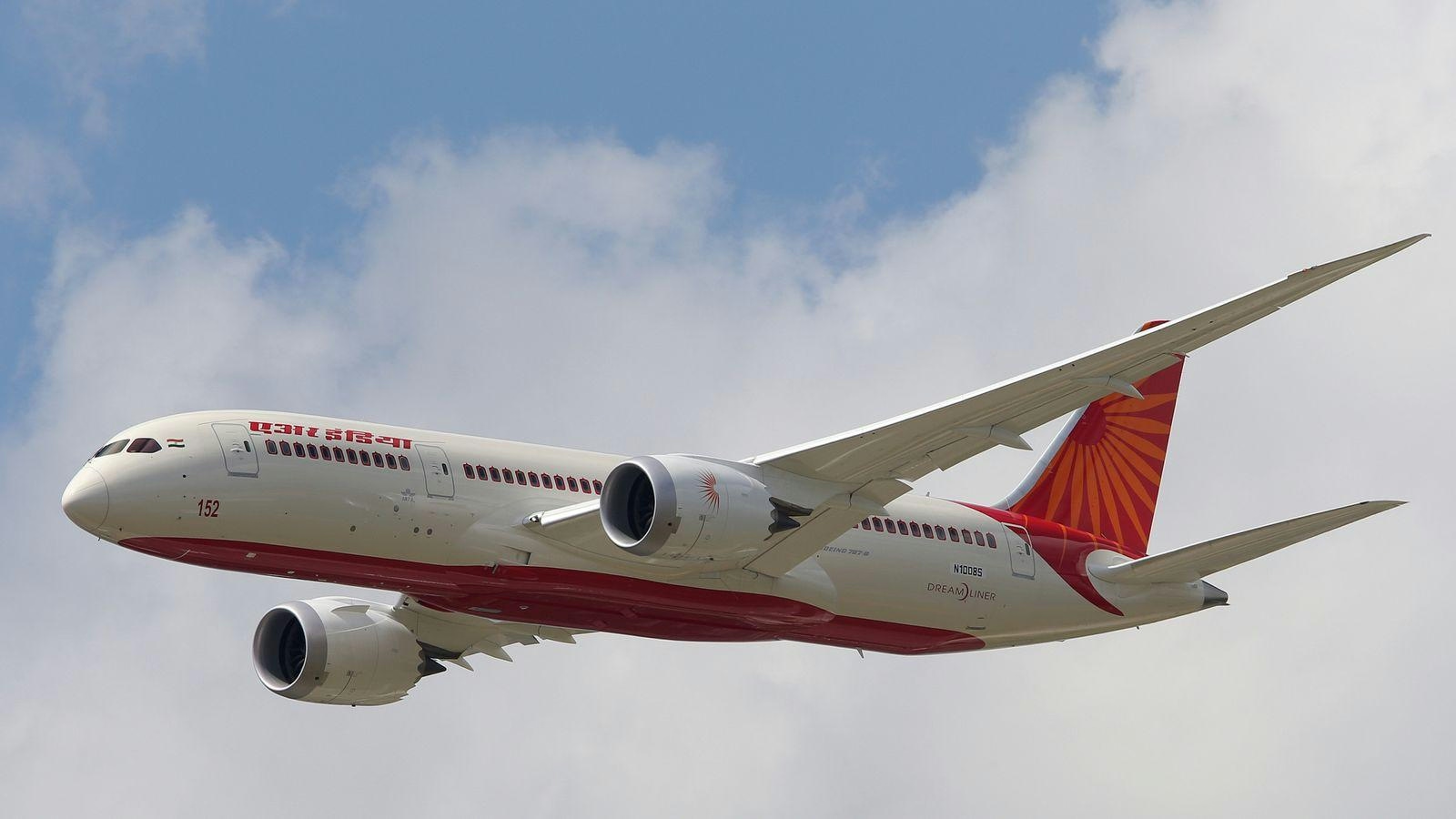
Aviation Expert Suggests Boeing 787 Software May Have Contributed to AI Crash
Aviation Expert Raises Concerns Over Boeing 787 Software in Air India Crash
Mary Schiavo, former Inspector General of the U.S. Department of Transportation and a prominent aviation attorney, has expressed serious concerns that a software-related engine thrust rollback malfunction in the Boeing 787 may have played a role in the recent crash of Air India Flight AI-171. In an exclusive interview with *The Sunday Guardian*, Schiavo highlighted a known issue previously examined by the U.S. National Transportation Safety Board (NTSB), where the aircraft’s computer systems could mistakenly reduce engine thrust during flight.
Drawing on her extensive experience overseeing major air safety investigations and representing families affected by aviation disasters, Schiavo emphasized the risks posed by Boeing’s involvement in its own crash investigations. She called on India’s Directorate General of Civil Aviation (DGCA) to undertake a comprehensive and independent inquiry, particularly given the complexity of the Boeing 787’s software systems.
Software Malfunction and Regulatory Concerns
Central to Schiavo’s warning is the Thrust Control Malfunction Accommodation (TCMA) system, mandated by the Federal Aviation Administration for the Boeing 787. The TCMA operates in conjunction with the Full Authority Digital Engine Control (FADEC) system, relying on computer inputs to determine whether the aircraft is airborne or on the ground. If these systems incorrectly classify the aircraft’s status, they may automatically adjust engine settings, potentially reducing thrust without any pilot intervention.
Schiavo referenced a 2019 incident involving Japan’s All Nippon Airways (ANA), where a similar dual engine thrust rollback occurred. The NTSB investigation into that event identified the issue as a software design flaw and led to corrective measures across the 787 fleet. According to Schiavo, such computer-triggered thrust reductions would leave distinct signatures in the flight data recorder, which investigators should carefully analyze in the case of AI-171.
Wider Implications for Boeing and the Aviation Industry
The possibility that Boeing 787 software contributed to the Air India crash is expected to heighten scrutiny from aviation regulators worldwide. Should software faults be confirmed, both Boeing and Air India could face significant legal consequences. The incident may also prompt a broader reassessment of software-related risks within the 787 fleet. Schiavo drew parallels to Boeing’s handling of the MCAS software issue, which previously sparked global controversy and regulatory intervention.
Beyond regulatory and legal ramifications, the crash carries immediate consequences for the global aviation insurance market. Industry analysts warn that insurance and reinsurance premiums could increase, particularly in India, where the aviation insurance sector has already been grappling with financial losses. Competitors may leverage the situation to highlight their own safety records and technological advancements, potentially affecting Boeing’s market position.
For Air India, the crash presents a critical challenge to its Vihaan.AI transformation program, which aims to elevate the airline to world-class status within five years. The investigation’s outcome and the airline’s subsequent response will be closely monitored by regulators, insurers, and the traveling public.
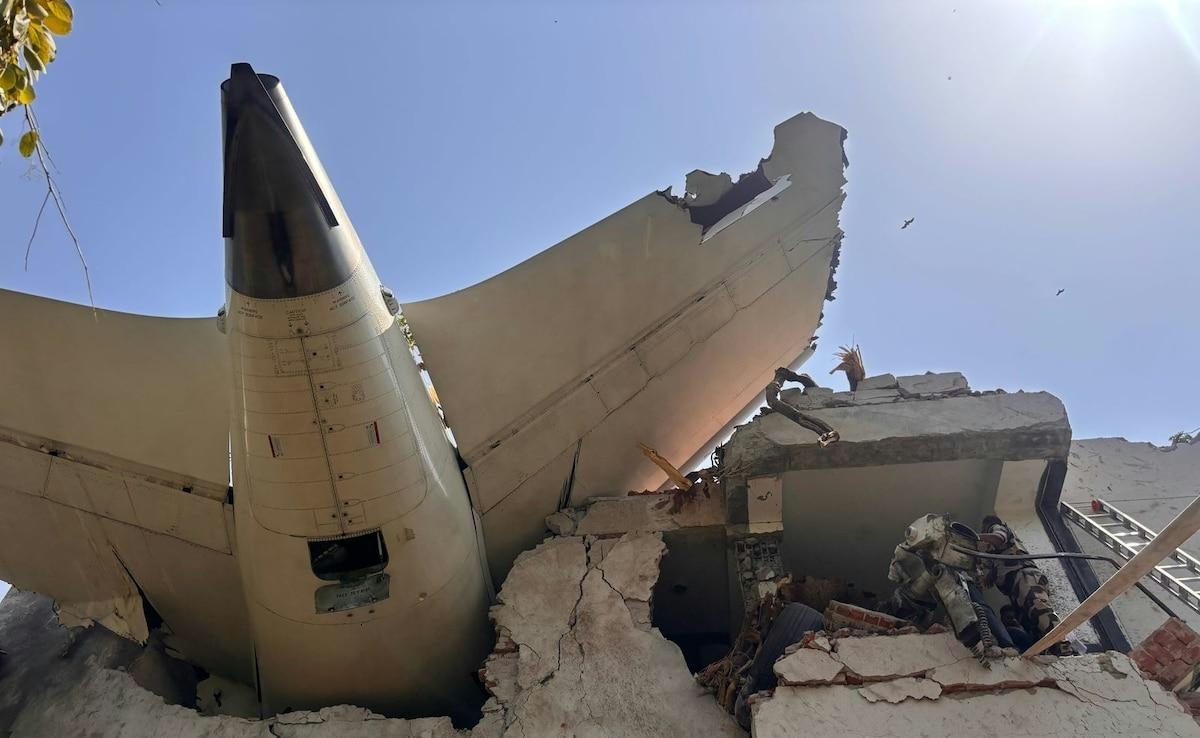
AI-Generated Content Spreads Misinformation After Air India Crash
AI-Generated Content Fuels Misinformation Surge After Air India Crash
In the wake of the Air India Boeing 787 crash near Ahmedabad, which tragically claimed 275 lives, a surge of AI-generated misinformation has complicated efforts to deliver accurate updates and intensified public anxiety. The disaster, which occurred on June 12, has been followed by a proliferation of false reports and manipulated media across social platforms and news outlets, challenging authorities and experts alike.
The Spread of False Reports and Manipulated Media
Shortly after the crash, a preliminary investigation report surfaced within aviation circles, appearing official and replete with technical aviation terminology. However, experts quickly identified the document as a product of generative AI, repurposing details from an unrelated 2024 LATAM Airlines incident in South America. Despite Indian authorities promptly debunking the report, several news organizations had already disseminated misleading headlines, further confusing the public and even some aviation professionals.
The misinformation extended beyond fabricated reports. Digital fraud detection firm mFilterIt uncovered numerous AI-generated images and videos falsely depicting the crash aftermath, alongside fraudulent fundraising campaigns exploiting the tragedy. Amit Relan, co-founder and CEO of mFilterIt, highlighted a disturbing pattern of bad actors leveraging AI and social media to spread misinformation and commit fraud during sensitive events such as the Air India Flight 171 crash. He underscored the urgent need for public education to help individuals discern legitimate content from manipulated material and called for enhanced collaboration among technology platforms, law enforcement agencies, and industry stakeholders to combat these threats.
Impact on Public Perception and Official Response
The rapid dissemination of false information has heightened public panic and intensified pressure on authorities to maintain transparent communication. The International Civil Aviation Organization (ICAO) emphasized the critical role of effective media engagement in preserving public trust and ensuring the accuracy of information during aviation crises. According to the ICAO, a well-planned and executed communication strategy is vital to minimizing negative publicity and ensuring timely, factual reporting.
India’s civil aviation ministry confirmed that the Aircraft Accident Investigation Bureau (AAIB) has successfully retrieved data from the cockpit voice recorder (CVR) and flight data recorder (FDR), which are currently undergoing analysis in New Delhi. The recovery and examination of these recorders are expected to be pivotal in advancing the investigation.
The incident has also drawn scrutiny across related sectors. Market analysts are monitoring the aviation insurance and reinsurance markets for potential repercussions, while Air India’s ongoing transformation program faces renewed challenges amid the crisis. Competitors have responded by emphasizing their own safety protocols and communication strategies to reassure passengers and sustain operational momentum.
John Cox, a former airline pilot and CEO of Safety Operating Systems, stressed the necessity for a fundamental shift in crisis communication. He described the current situation as the most extensive case of misinformation witnessed during any aviation accident. Cox advocated for daily briefings by the AAIB, similar to practices adopted by agencies worldwide, noting that in the absence of reliable information, misinformation inevitably fills the void.
As the investigation proceeds, authorities and industry stakeholders confront the ongoing challenge of countering misinformation, restoring public confidence, and ensuring that accurate information prevails.
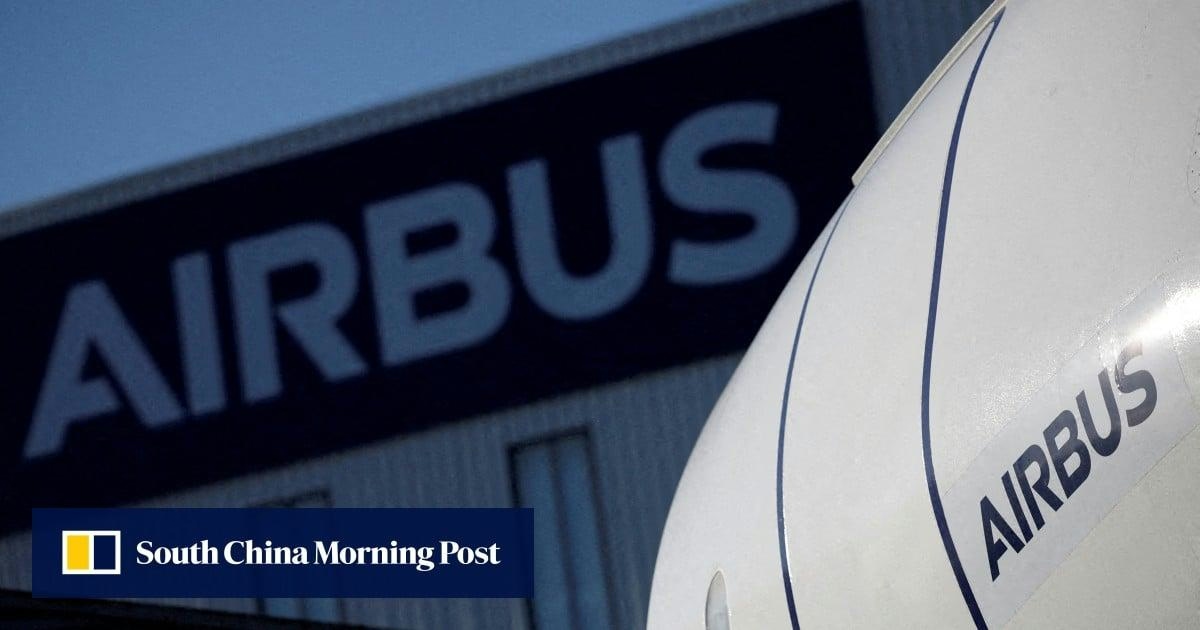
China edges closer to Airbus mega-deal, leaving Boeing out in the cold: analysts
China Nears Major Airbus Deal Amid Boeing’s Decline in Chinese Market
China is reportedly on the verge of finalizing a substantial aircraft order with European aerospace leader Airbus, potentially acquiring between 100 and 200 new jets. This development would further solidify Europe’s position as China’s preferred supplier of commercial aircraft, despite the continued reliance of some Chinese airlines on American manufacturer Boeing.
Shifting Dynamics in China’s Aviation Sector
Boeing, which once held a dominant position in the Chinese market, has not secured a significant order from China since 2017. This prolonged absence coincides with escalating trade tensions between Beijing and Washington, compounded by a series of challenges for the US company. These include labor strikes, financial setbacks, and high-profile accidents such as the recent Air India crash involving a Boeing 787 Dreamliner, which resulted in at least 270 fatalities.
Industry analysts suggest that China’s potential Airbus order could inflict a serious blow to Boeing’s market share as the country’s aviation sector continues to grow rapidly. Airbus’s European base may provide logistical and diplomatic advantages for Chinese buyers increasingly cautious of geopolitical risks and safety concerns associated with US suppliers. Concurrently, China is advancing production of its domestically developed Comac C919 passenger jet, further diversifying its fleet away from American manufacturers.
Brian Yang Bo, an aviation industry veteran and independent consultant, noted, “Buying from Airbus makes a lot of sense now, both commercially and diplomatically. But carriers with Boeing-only fleets are caught on the back foot.”
Market Implications and Future Prospects
The market has already reacted to the news, with Airbus shares rising amid expectations of increased orders. Conversely, Boeing’s position could deteriorate further if it remains excluded from China’s recent aircraft procurement activities. Some analysts argue that Boeing may need to renegotiate terms or explore alternative markets to compensate for the potential loss of Chinese business.
As China moves closer to securing a landmark deal with Airbus, the divide between the two aerospace giants in the Chinese market appears set to widen, presenting Boeing with mounting challenges in one of the world’s most vital aviation arenas.
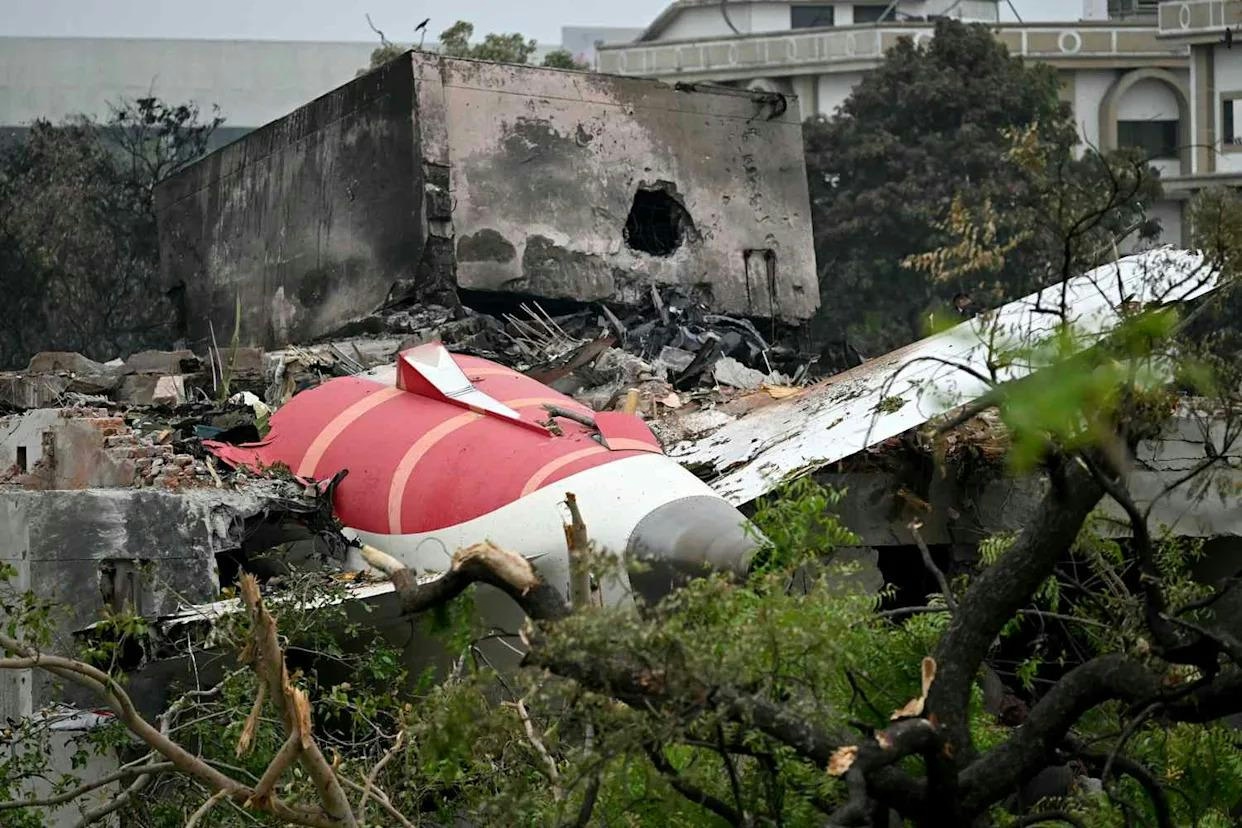
Initial Probe Points to Cause of AI 171 Crash After 15-Second Mayday Call
Initial Probe Points to Power Failure as Cause of AI 171 Crash After 15-Second Mayday Call
An initial investigation into the crash of Air India Flight AI 171 has identified a sudden power failure in the aircraft’s main electrical system shortly after takeoff as the probable cause of the disaster. The Boeing 787 Dreamliner, carrying 242 passengers and crew, crashed moments after departing Ahmedabad Airport, descending rapidly at a rate of 475 feet per minute after reaching an altitude of just 625 feet.
The Mayday Call and Immediate Response
As the aircraft began to lose altitude, Captain Sumeet Sabharwal and co-pilot Clive Kundar issued a brief but urgent “Mayday” distress call to Air Traffic Control (ATC), stating, “Mayday… no thrust, losing power, unable to lift.” Captain Sabharwal, a seasoned pilot with over 8,200 flying hours, made the call only 15 seconds before the plane impacted the ground. Despite ATC’s attempts to re-establish communication, no further contact was made, leaving a very narrow window for any emergency response.
The Mayday call, derived from the French term “m’aider” meaning “help me,” is the highest level of distress signal in aviation and has been the international standard since 1927. It is reserved for life-threatening emergencies requiring immediate assistance.
Investigation and Technical Findings
India’s Aircraft Accident Investigation Bureau (AAIB) is leading an independent inquiry into the crash. Investigators have recreated the incident using flight simulators, replicating conditions such as the landing gear being down and wing flaps engaged. These simulations did not result in a crash, indicating that a more critical failure likely occurred.
Evidence suggests a possible dual engine failure, as the aircraft’s emergency power system, known as the Ram Air Turbine (RAT), was deployed by the pilots. The activation of the RAT typically signals a loss of engine power or a complete electrical failure. Although dual engine failures are exceedingly rare, investigators have not dismissed this possibility. The ongoing recovery and analysis of the second “black box” flight recorder are expected to provide more conclusive information.
Broader Implications and Ongoing Inquiry
The crash carries significant consequences for Air India, including potential reputational damage, financial losses, and operational disruptions. It is also expected to trigger heightened scrutiny and possible regulatory reforms within India’s aviation sector. Boeing, as the manufacturer of the aircraft, may face reputational and legal challenges as the investigation progresses.
CCTV footage widely circulated online shows the aircraft taking off from Runway 23 before unexpectedly descending and veering over a residential area, followed by a massive explosion and a plume of black smoke at the crash site. Flight tracking data confirmed that the aircraft lost contact just seconds into its planned 4,200-mile journey to London’s Gatwick Airport.
Investigators are also reviewing a previous takeoff incident involving the same route to Gatwick from five years ago as part of their efforts to determine the full cause of the crash. The findings from this ongoing investigation are anticipated to influence future safety protocols and regulatory oversight in both Indian and international aviation.
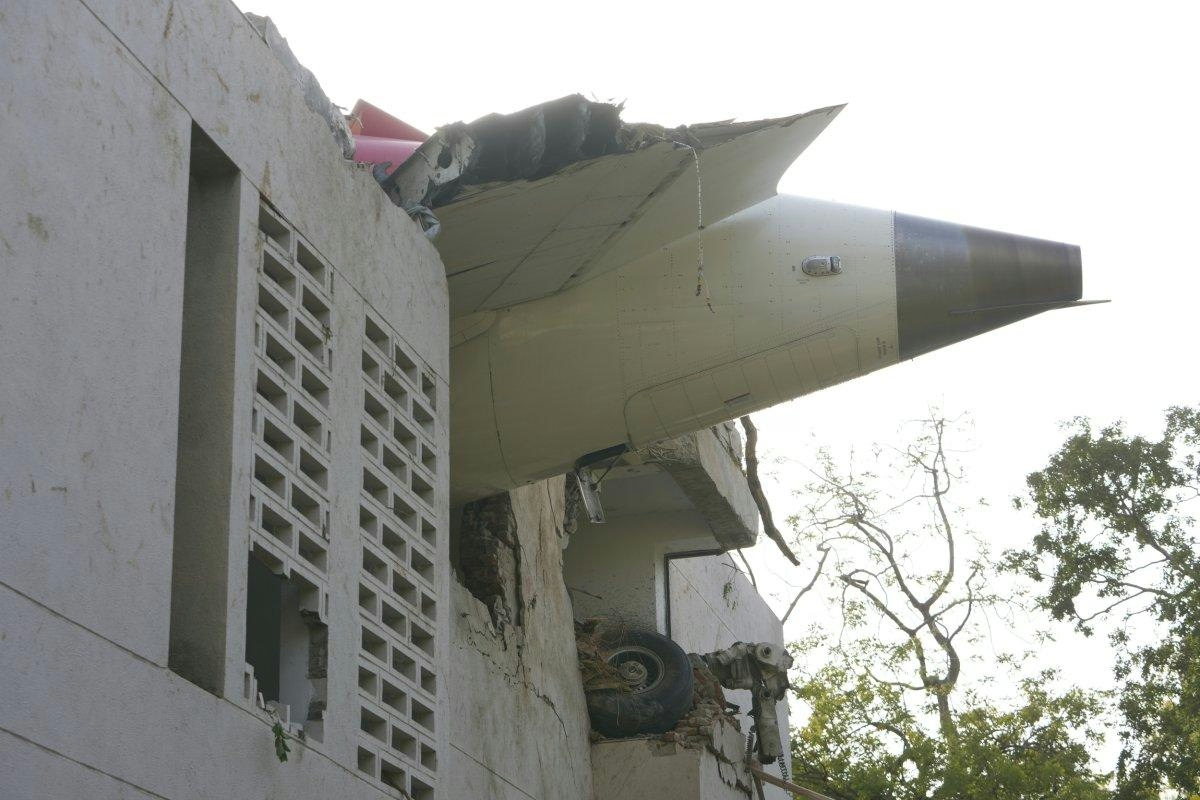
Another Air India Plane Descends 900 Feet After Takeoff, DGCA Investigates Following AI 171 Crash
Air India Faces Renewed Safety Scrutiny Following Second Inflight Incident
Just 38 hours after the tragic crash of Air India flight AI 171 in Ahmedabad, the airline has been confronted with another serious safety event. On June 14, Air India flight AI 187, operating a Boeing 777 from Delhi to Vienna, experienced a sudden and alarming loss of altitude shortly after takeoff, prompting an immediate investigation by India’s Directorate General of Civil Aviation (DGCA).
Details of the Incident
The aircraft, registered VT-ALJ, encountered severe thunderstorm conditions over Delhi at approximately 2:56 am. During the initial climb, the cockpit was alerted by a “stick shaker” warning—a critical signal indicating an imminent aerodynamic stall—accompanied by two “don’t sink” cautions from the Ground Proximity Warning System (GPWS). These warnings signaled a dangerous and abnormal descent of nearly 900 feet. Despite the severity of the situation, the flight crew successfully regained control, and the aircraft completed its journey to Vienna, landing safely after a nine-hour flight.
Subsequent analysis of flight data revealed multiple onboard warnings that were not fully disclosed in the initial pilot report. While the crew’s preliminary account mentioned only a “stick shaker due to turbulence after takeoff,” the flight data recorder indicated additional stall and GPWS alerts, underscoring the gravity of the event. In response, both pilots have been temporarily removed from flying duties, and Air India’s head of safety has been summoned for questioning as part of the ongoing DGCA investigation.
Implications for Air India and Indian Aviation
This incident compounds the challenges facing Air India amid heightened scrutiny following the AI 171 crash, which resulted in several fatalities and raised urgent concerns about the airline’s safety culture and operational standards. The airline’s ambitious Vihaan.AI transformation program, designed to position Air India as a world-class global carrier, now faces significant reputational and operational hurdles.
The DGCA has intensified its oversight of Air India’s fleet and safety protocols in light of these events. Although recent inspections of the airline’s Boeing 787 fleet did not uncover major safety deficiencies, the recurrence of critical inflight warnings has reignited broader concerns regarding Boeing aircraft safety and the robustness of India’s aviation regulatory framework. These developments carry potential ramifications beyond Air India, with possible impacts on inbound tourism and business travel to India.
An Air India spokesperson confirmed that the pilot’s initial report was promptly shared with the DGCA in accordance with regulatory requirements. The spokesperson added that the pilots involved have been off-rostered pending the outcome of the investigation.
On June 17, the DGCA publicly expressed concern over “recent maintenance-related issues” and directed Air India to improve coordination among its engineering, operations, and ground handling divisions. The regulator emphasized the urgent need for a renewed focus on safety as the airline navigates this turbulent period.
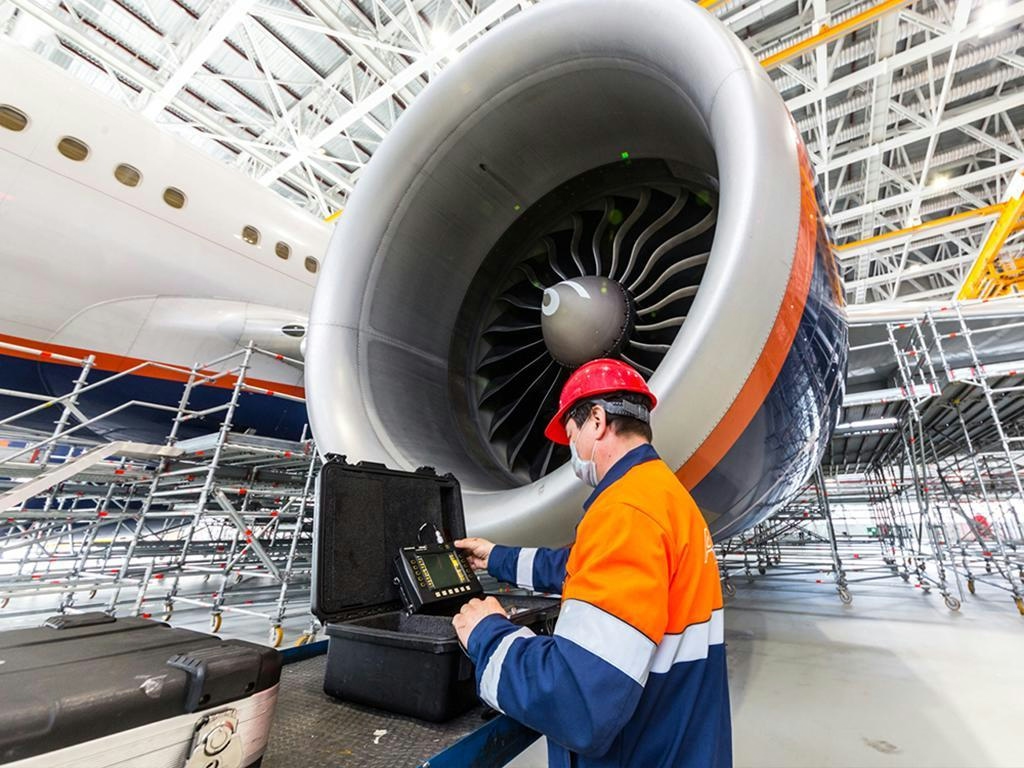
FL Technics Acquires JOB AIR Technic
FL Technics to Acquire JOB AIR Technic, Enhancing MRO Capacity in Central Europe
FL Technics, a leading global provider of aviation maintenance, repair, and overhaul (MRO) services, has announced its intention to acquire JOB AIR Technic a.s., a Czech-based MRO provider. The transaction remains subject to customary closing conditions and regulatory approvals. Central to the deal is the transfer of a 17,000-square-meter MRO facility located at Leoš Janáček Airport Ostrava, the largest regional airport in the Czech Republic. This acquisition is set to substantially increase FL Technics’ maintenance capabilities within the Central European region.
Expanding Service Capabilities and Geographic Reach
Established in 1993 and formerly part of the Czechoslovak Group (CSG), JOB AIR Technic employs over 400 specialists and operates two hangars comprising eight bays designed to accommodate both narrow-body and wide-body aircraft. The company provides a broad range of services, including base maintenance, avionics, structural repairs, composite work, emergency equipment servicing, non-destructive testing, and interior refurbishment. Additionally, JOB AIR operates a Part 147 maintenance training center and holds regulatory certifications from multiple authorities such as EASA, FAA, Transport Canada, and Bermuda CAA. These approvals enable the servicing of various aircraft types, including Airbus A320 (and A320NEO), A330, and Boeing 737 NG and MAX models, catering to major European and international airlines.
Zilvinas Lapinskas, CEO of FL Technics, highlighted the strategic importance of the acquisition, noting that JOB AIR’s existing infrastructure and client base will allow FL Technics to immediately expand its service capacity without the delays typically associated with new construction and certification processes. He emphasized the facility’s advantageous location, which facilitates coverage across Europe, North Africa, and Turkey within a three- to four-hour flight radius.
Industry Context and Market Implications
While the acquisition promises to strengthen FL Technics’ position in the MRO sector, it remains contingent upon regulatory approvals and the effective integration of operations—factors that may present challenges. The transaction occurs amid a cautiously optimistic business aviation market, where sentiment indicators have shown only modest improvement against a backdrop of ongoing uncertainties.
Recent industry developments, such as Gama Aviation’s acquisition of Capital Air Ambulance and the expansion of MRO and fixed-base operator (FBO) services in Illinois, illustrate how consolidation can prompt competitors to recalibrate their strategies. These adjustments may include increased investment in customer support and the broadening of service offerings to maintain competitive advantage.
Market responses to FL Technics’ acquisition of JOB AIR Technic are expected to vary from cautious optimism to intensified competition, as stakeholders evaluate the potential impact on service capacity and regional influence. As the deal advances through the approval process, industry observers will closely monitor FL Technics’ integration efforts and the broader competitive dynamics within the evolving MRO landscape.

Aircraft Leasing Executive Paul Barton Leaves €17.5 Million Estate
Aircraft Leasing Executive Paul Barton Leaves €17.5 Million Estate
Probate records have disclosed that Paul Barton, a distinguished figure in the aircraft leasing industry, left an estate valued at €17.5 million following his death in September last year. Barton, who lived at Waltham Terrace, Blackrock, County Dublin, was the former managing director of GE Capital Aviation Services (GECAS), the world’s largest commercial aircraft leasing and financing company by fleet size. He was instrumental in guiding GECAS through its landmark €25 billion merger with AerCap in 2021, a transaction that established the largest aviation leasing group globally.
Career and Industry Impact
Barton’s career in aircraft leasing began in 1985 with Tony Ryan’s Guinness Peat Aviation. He was also a founding director of Avolon, a major global leasing company. His leadership spanned a period marked by significant transformation and challenges within the sector. Recently, aircraft leasing firms have confronted complex legal and financial difficulties, including multibillion-euro lawsuits related to aircraft stranded in Russia. These disputes have introduced new uncertainties and are poised to reshape market dynamics. Alongside these challenges, evolving market conditions have led to shifts in leasing rates and heightened liquidity demands, particularly concerning new-generation engine leasing.
In response to these pressures, competitors have implemented strategic adjustments. Dubai Aerospace Enterprise (DAE), for instance, has begun divesting E-Jets and older aircraft from its portfolio to streamline operations and reduce exposure to market risks. Such measures underscore the broader industry adaptations that Barton’s tenure helped to navigate.
Other Notable Estates
The Probate Office also published details of several other significant estates last week. Josephine Buckley of Annakisha, Mallow, County Cork, who passed away in March 2022, left an estate valued at €5.9 million. Jeremiah Anthony Roynane of Lavally, Mallow, County Cork, died in November 2023, leaving €4.28 million. Julian Deale of Monkstown Road, Dublin, left an estate worth €2.21 million upon his death in May 2024, while Bridie Brady of Mount Prospect Avenue, Clontarf, Dublin, left €2.18 million. Paul Kennedy of Cartown House, Kildimo, County Limerick, who died last November, left an estate valued at €1.89 million.
The reported estate values include all assets such as property and land, and are not confined to cash holdings alone.
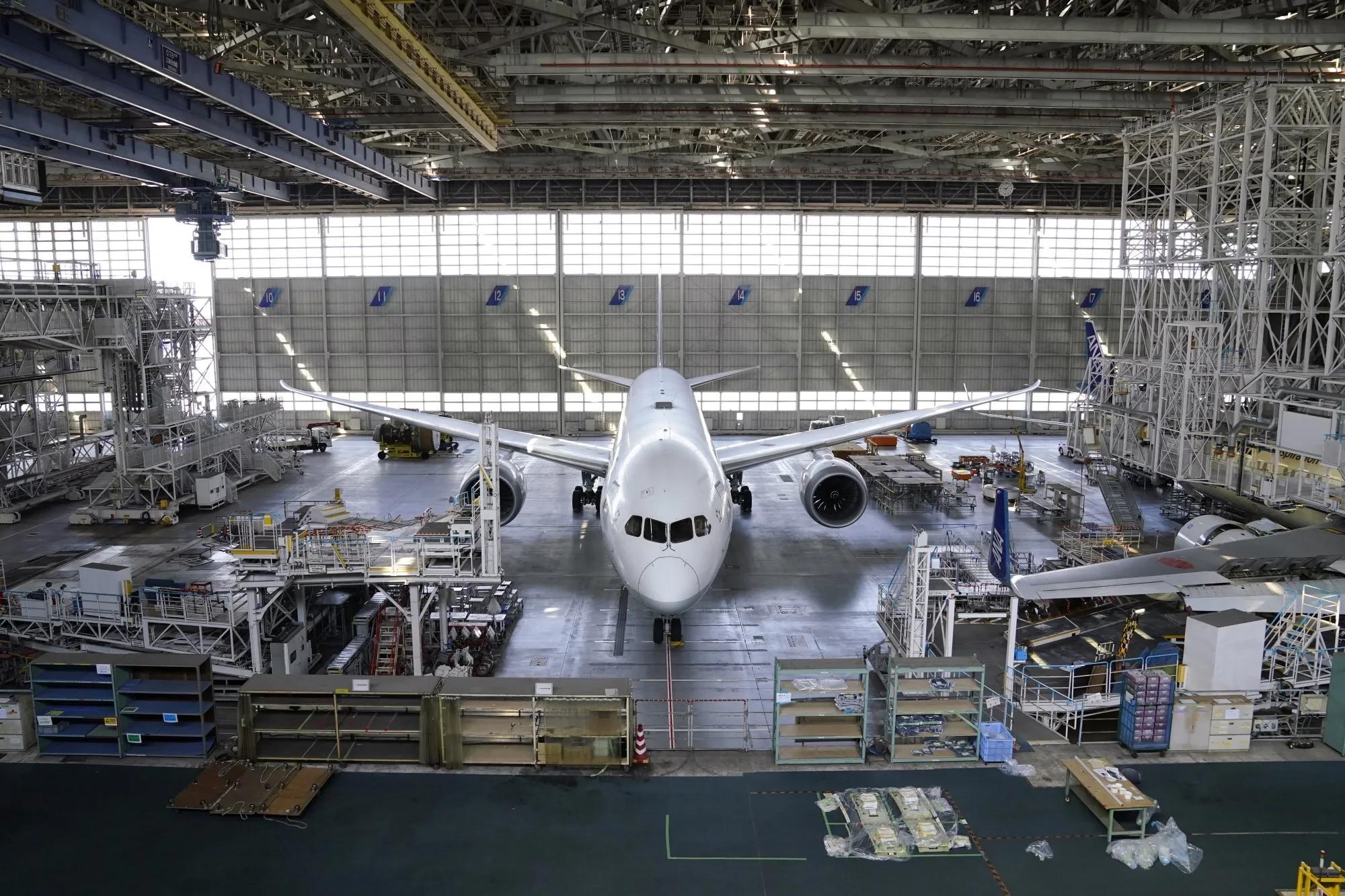
FAA Mandates Inspections of Boeing 787 Over Water Leak Concerns
FAA Mandates Inspections of Boeing 787 Over Water Leak Concerns
The Federal Aviation Administration (FAA) has issued a directive requiring comprehensive inspections of Boeing 787 Dreamliner aircraft following reports of water leaks that could potentially compromise the safety and integrity of the planes. This move comes after several operators reported incidents where water intrusion was detected in critical areas of the aircraft, raising concerns about corrosion and electrical system malfunctions.
Details of the Inspection Directive
The FAA’s Airworthiness Directive mandates that all operators of the Boeing 787 conduct thorough examinations of the aircraft’s fuselage and associated systems to identify any signs of water ingress. The inspections are to focus on areas around the aircraft’s windows, doors, and other structural joints where seals may have deteriorated or failed. The agency emphasized the importance of timely compliance to prevent any escalation of damage that could affect flight safety.
Boeing has acknowledged the issue and is collaborating closely with the FAA and airlines to address the problem. The manufacturer has indicated that it will provide updated maintenance guidelines and support to ensure that the inspections are carried out effectively. Airlines operating the 787 have been advised to prioritize these inspections during routine maintenance schedules.
Implications for Airlines and Passengers
While no incidents directly linked to the water leaks have resulted in accidents or injuries, the FAA’s directive underscores the critical nature of the issue. Airlines may experience temporary disruptions as aircraft undergo the required inspections and any necessary repairs. Passengers are advised to stay informed through their carriers regarding any potential changes to flight schedules.
The FAA continues to monitor the situation closely and has pledged to take further action if additional risks are identified. This directive reflects the agency’s commitment to maintaining the highest standards of aviation safety and ensuring that emerging issues are addressed promptly.
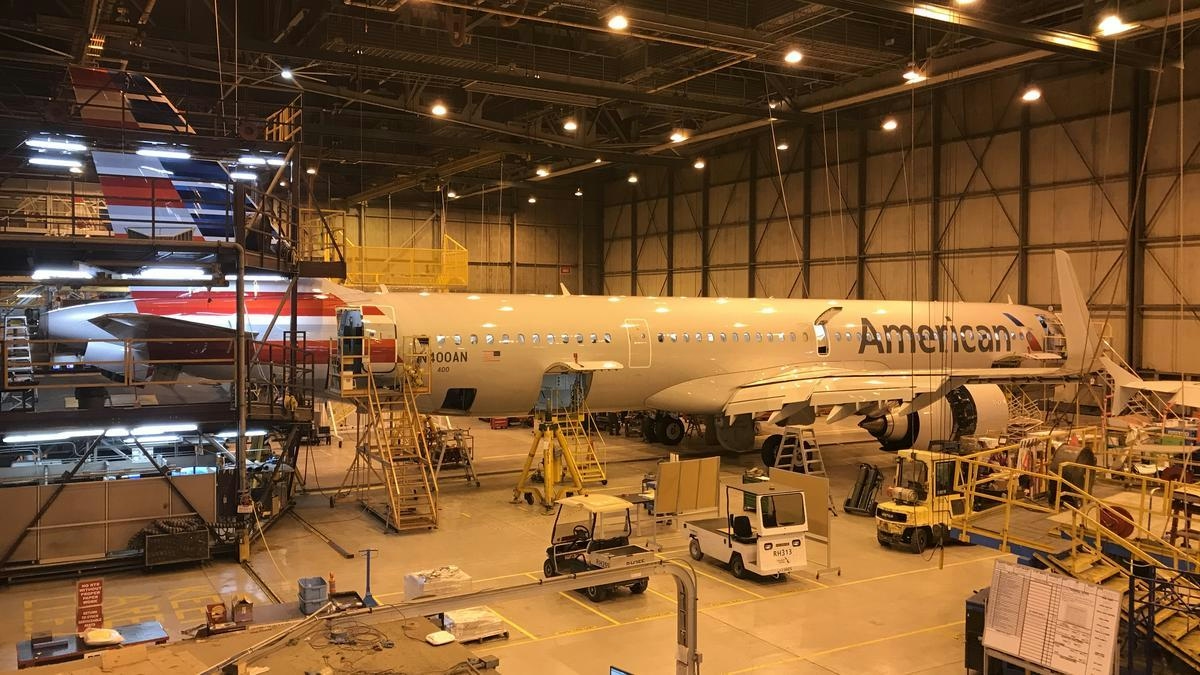
American Airlines Airbus A321 Damaged in Denver Tug Collision
American Airlines Airbus A321 Damaged in Denver Tug Collision
An American Airlines Airbus A321, registered as N578UW, sustained damage following a collision with a tug at Denver International Airport (DEN) shortly before its scheduled departure. The aircraft was preparing for a flight to Tulsa International Airport (TUL) for maintenance when the incident occurred. Despite the collision, the plane was able to complete its journey to Tulsa, arriving nearly fifteen minutes ahead of schedule, according to FlightAware data.
Incident and Operational Impact
The A321 remained airworthy after the collision, enabling it to reach Tulsa, which hosts one of American Airlines’ largest maintenance, repair, and overhaul (MRO) facilities. Ground handling accidents such as this are costly, not only due to direct repair expenses but also because of the extended downtime they impose on aircraft. These incidents can lead to broader operational challenges, including delays in maintenance schedules and the temporary grounding of similar aircraft pending inspections. Aviation safety authorities are expected to increase scrutiny, often prompting comprehensive reviews of ground handling procedures and safety protocols.
The financial repercussions extend beyond immediate repair costs. Such events can influence market dynamics, potentially affecting airline stock prices and insurance claims. Competitors may also leverage these incidents to reinforce their own safety records through targeted marketing or competitive pricing strategies.
Maintenance Expansion and Workforce Development
American Airlines, alongside United and Delta, has been expanding operations following the easing of pandemic-related travel restrictions. The summer of 2025 is anticipated to set new records for air traffic, prompting American to increase heavy maintenance activities at its major hubs. In late 2024, the airline expanded its Technical Operations base in Tulsa, supported by a $22 million grant from Oklahoma’s Business Expansion Incentive Program. This expansion is projected to create over 300 new aviation maintenance technician (AMT) positions, with similar growth planned in Charlotte, North Carolina, and Pittsburgh, Pennsylvania.
Greg Emerson, American’s Vice President of Base Maintenance and Facilities, highlighted the strategic importance of this growth: “American is excited to grow our talented Technical Operations workforce with more high-paying, skilled aviation maintenance positions. It’s an opportunity to grow our maintenance capacity and capabilities in the near-term and preserve them over the long run by continuing to build our pipeline of future maintenance team members.”
Causes and Safety Considerations
Ground damage to aircraft is frequently attributed to human error, including rushing, inattention, or insufficient training. Additional factors such as adverse weather conditions, ramp design, and equipment malfunctions also contribute to such incidents. Vulnerable parts of the aircraft, including the empennage, wingtips, and leading edges, are particularly susceptible to damage. While most damage is immediately visible and addressed before flight, some issues may remain undetected without thorough inspections.
Aircraft manufacturers have introduced limiters and oversteer indicators to mitigate towing-related incidents. Nonetheless, best practices continue to emphasize methodical operations, careful equipment handling, and ongoing evaluation of ground support procedures to enhance safety.
As the investigation into the Denver collision proceeds, American Airlines and the wider aviation industry are expected to face increased oversight and renewed focus on ground safety measures. Observers are advised to monitor official statements and regulatory updates for further developments.

Why Joby Aviation Stock Is Soaring Today
Why Joby Aviation Stock Is Soaring Today
Shares of Joby Aviation (NYSE: JOBY) surged by 11.6% on Monday, significantly outperforming broader market indices, with the S&P 500 and Nasdaq Composite rising only 0.4% and 0.5%, respectively. This sharp increase reflects a series of positive developments for the electric vertical takeoff and landing (eVTOL) aircraft manufacturer, particularly in the Middle East and the United States.
Milestone Achieved in Dubai
Joby Aviation recently completed a series of wingborne test flights with its eVTOL air taxi in Dubai, marking the first such flights in the United Arab Emirates. This milestone represents a crucial step toward the company’s goal of launching commercial air taxi services in the region. The tests were conducted in collaboration with Dubai’s Roads and Transport Authority (RTA), the Dubai Civil Aviation Authority, and the UAE’s General Civil Aviation Authority. Earlier this year, Joby secured an exclusive six-year agreement with the RTA and Skyports to operate air taxis in Dubai.
Commercial operations in Dubai are anticipated to commence in 2026, positioning Joby as a leading player in the global advanced air mobility market. The company’s exclusive rights to the Dubai market provide a significant competitive edge amid growing global interest in urban air mobility solutions.
Strategic Partnerships and U.S. Progress
Investor sentiment has also been bolstered by Joby’s recent initiatives in the United States. The company conducted a public demonstration of its technology in New York City, showcasing its capabilities to regulators and the public alike. Additionally, Joby received a new order aimed at enhancing U.S. defenses against drone threats, further underscoring its technological prowess. Its strategic partnership with Delta Air Lines is viewed as a critical factor in reducing operational risks and accelerating market entry, particularly within the U.S.
Competitive Environment and Financial Considerations
Despite Joby’s apparent leadership in the eVTOL sector, the competitive landscape remains highly dynamic. Rival Archer Aviation recently announced an $850 million stock offering, highlighting both the capital-intensive nature of the industry and the increasing investor appetite for advanced air mobility ventures.
Joby’s strong balance sheet offers some financial flexibility as it transitions from pre-revenue status to commercial operations. Nonetheless, analysts warn that the company may need to raise additional capital to scale production, which could result in shareholder dilution. Market reactions are mixed; some analysts have downgraded Joby due to concerns over near-term growth prospects, while others emphasize the long-term potential of its electric air taxi service.
Outlook
Joby Aviation aims to launch commercial operations as early as next year, with Dubai services expected to begin in 2026. The company’s recent achievements, strategic alliances, and exclusive market agreements have reinforced its standing in the rapidly evolving eVTOL industry. However, investors should remain cautious of the challenges associated with scaling production and the intensifying competition within the sector.
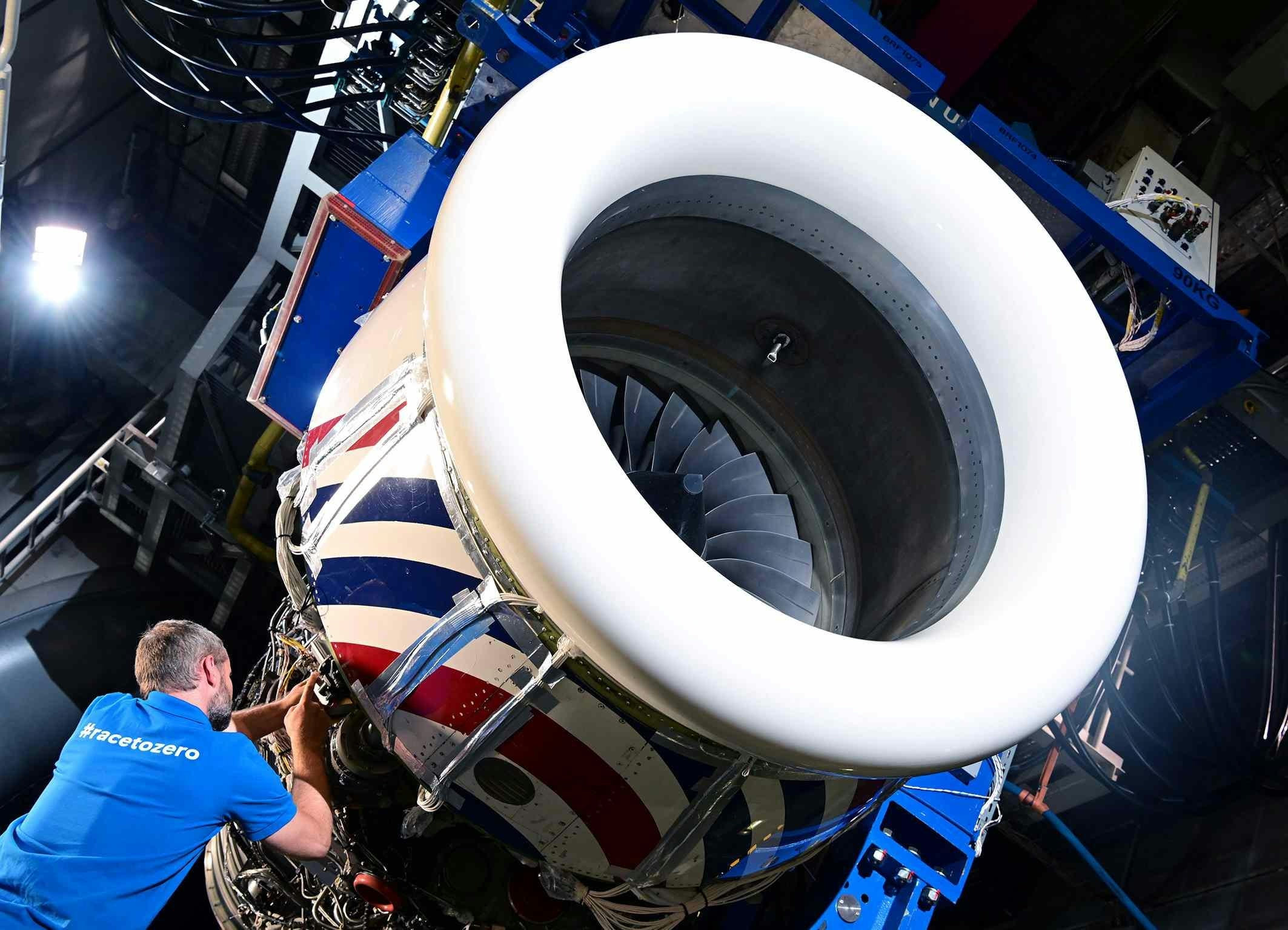
Rolls-Royce Plans Return to Short-Haul Aircraft Engine Market
Rolls-Royce Plans Strategic Return to Short-Haul Aircraft Engine Market
Rolls-Royce is preparing to re-enter the narrowbody aircraft engine sector, targeting a share of the $1.6 trillion global short-haul engine market. This strategic move, backed by the UK government, could involve reviving a joint venture with US manufacturer Pratt & Whitney, according to chief executive Tufan Erginbilgic. Currently, Rolls-Royce’s focus lies primarily on powering long-haul widebody aircraft, but the company now views the short-haul segment as a significant growth opportunity. Erginbilgic described the initiative as “the single-biggest opportunity for economic growth for the UK in the next 50 years.”
Central to this strategy is the development of the next-generation UltraFan engine, a £3 billion programme that has been underway for several years. Rolls-Royce is engaged in ongoing discussions with industrial partners, with the possibility of rekindling its previous alliance with Pratt & Whitney, which ended over a decade ago. Erginbilgic emphasized the company’s engineering capabilities but acknowledged that a partnership might ultimately be the most advantageous outcome.
The UK government has expressed strong support for Rolls-Royce’s ambitions, highlighting the strategic importance of gas turbine technology to national and economic security. Securing a UK engine position on next-generation single-aisle aircraft programmes has been identified as a key industrial priority. Talks are in progress regarding potential taxpayer funding for the UltraFan project. Erginbilgic noted that state support is not unprecedented, pointing out that competitors receive significantly more government assistance. He described the UltraFan development as a “new development” and a “big opportunity” where modest support would be beneficial.
Challenges and Competitive Landscape
Despite the promising outlook, Rolls-Royce faces considerable challenges in re-establishing itself in the short-haul market. The sector is currently dominated by established players such as General Electric, CFM International, and Pratt & Whitney, all of whom are expected to respond with accelerated engine development and aggressive marketing to protect their market share. Additionally, Rolls-Royce must secure substantial investment for new engine development and navigate complex regulatory approvals. Airlines may also exhibit skepticism regarding the performance and cost-effectiveness of any new engine offerings.
Competition is further intensified by Airbus’s development of the next generation of its A320 aircraft, which has shown a preference for CFM’s open-fan technology. Nevertheless, Erginbilgic remains optimistic about Rolls-Royce’s prospects, stating that the final decisions are still “undecided” and that he maintains dialogue with all stakeholders. He underscored the company’s technological expertise, industry credibility, financial strength, and engineering capabilities as key assets that position Rolls-Royce to compete effectively in the narrowbody segment, despite the operational scale-up required.
In addition to its short-haul ambitions, Rolls-Royce has recently invested in enhancing engine durability and secured international contracts for 142 aircraft engines. The company is also expanding its defence and energy operations, including ventures into small modular nuclear reactors for military applications and autonomous vehicle technologies. These efforts reinforce Rolls-Royce’s role as a cornerstone of the UK’s industrial future.
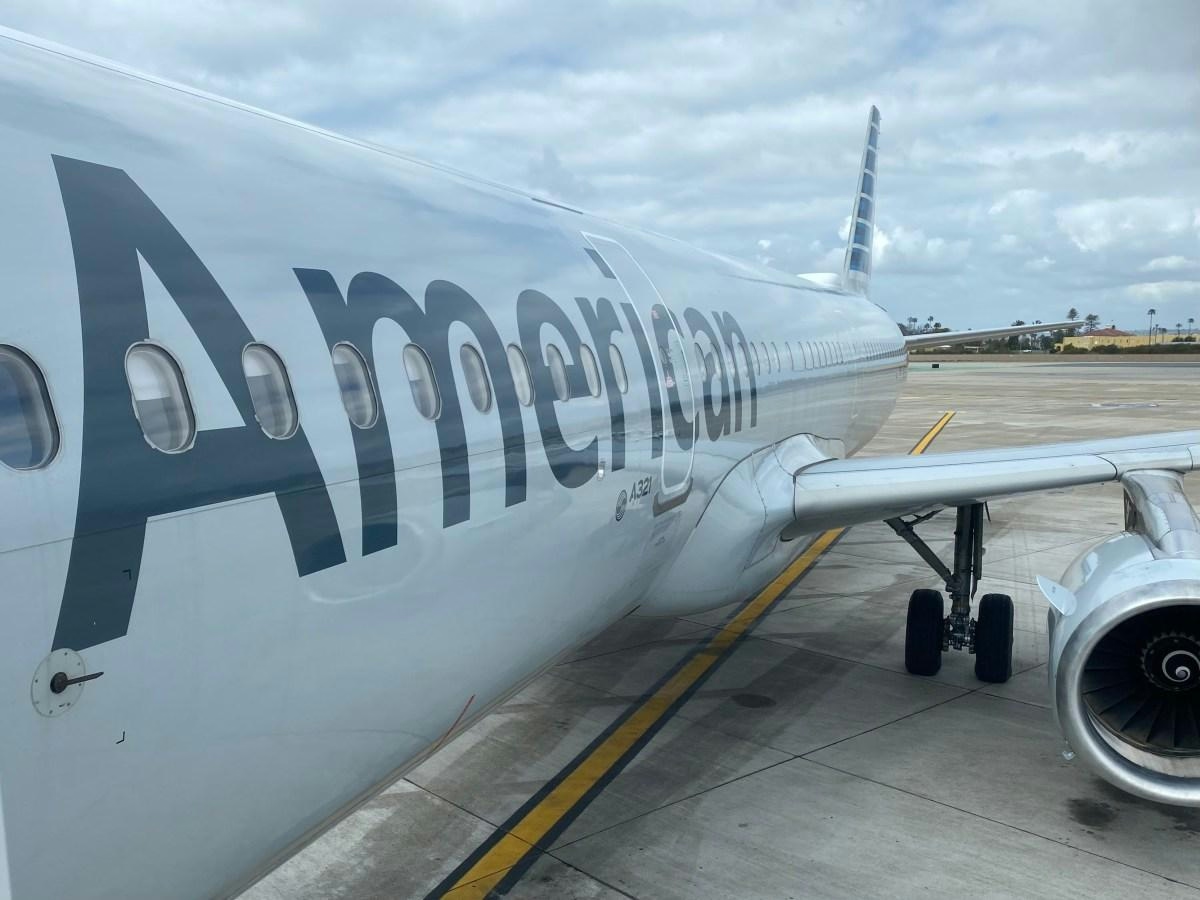
American Airlines Airbus A321 Returns to Service After Engine Issue Led to Overweight Landing in Phoenix
American Airlines Airbus A321 Returns to Service Following Engine Malfunction and Overweight Landing in Phoenix
An American Airlines Airbus A321-200 has resumed operations after an emergency landing at Phoenix Sky Harbor International Airport (PHX) caused by an engine malfunction shortly after departure. The incident occurred on Wednesday, June 25, involving flight AA1823, which was en route from Phoenix to Charlotte Douglas International Airport (CLT) in North Carolina.
Incident Overview
The aircraft, carrying 201 passengers and crew, departed Phoenix at 12:27 p.m. local time, approximately 12 minutes behind schedule. Shortly after takeoff, the flight crew reported an overheating issue with the number 2 engine. Passengers and witnesses described hearing a loud boom accompanied by smoke and visible flames emanating from the engine in flight. In response, the crew promptly shut down the affected engine as a precautionary measure and declared an emergency, requesting an immediate return to Phoenix.
Air traffic control directed the aircraft to climb and maintain an altitude of 5,000 feet while executing a turnaround for landing on runway 8, selected due to prevailing wind conditions. However, operating on a single engine amid the intense Arizona heat, the aircraft struggled to gain altitude, reaching only about 4,000 feet before commencing its approach.
Emergency Landing and Response
As the aircraft prepared to land, the pilots communicated the necessity of an overweight landing, indicating that the aircraft was heavier than its maximum certified landing weight due to unburned fuel. They also requested that fire and rescue services be on standby, citing concerns about hot brakes and the earlier engine overheating.
The flight crew informed air traffic control:
*"We're gonna go ahead right now and declare an emergency for overweight landing. [...] And for Fire Rescue, for 1823, just be prepared, we're gonna be an overweight landing. Our brakes may be hot. And we had an overheat on the right hand engine, engine 2."*
Despite these challenges, the aircraft landed safely at Phoenix Sky Harbor, vacated the runway without incident, and was met by emergency personnel for inspection. The Federal Aviation Administration (FAA) confirmed the safe landing and acknowledged the crew’s report of the engine issue.
Aftermath and Return to Service
Following a comprehensive inspection and any necessary maintenance, the Airbus A321 returned to service on Friday, June 27. American Airlines has reported no injuries among passengers or crew. While there has been no public commentary on market reactions or competitor responses, the airline has emphasized its commitment to passenger safety and adherence to regulatory standards.
This incident highlights the critical importance of crew training, emergency preparedness, and the rigorous safety protocols that underpin commercial aviation operations.
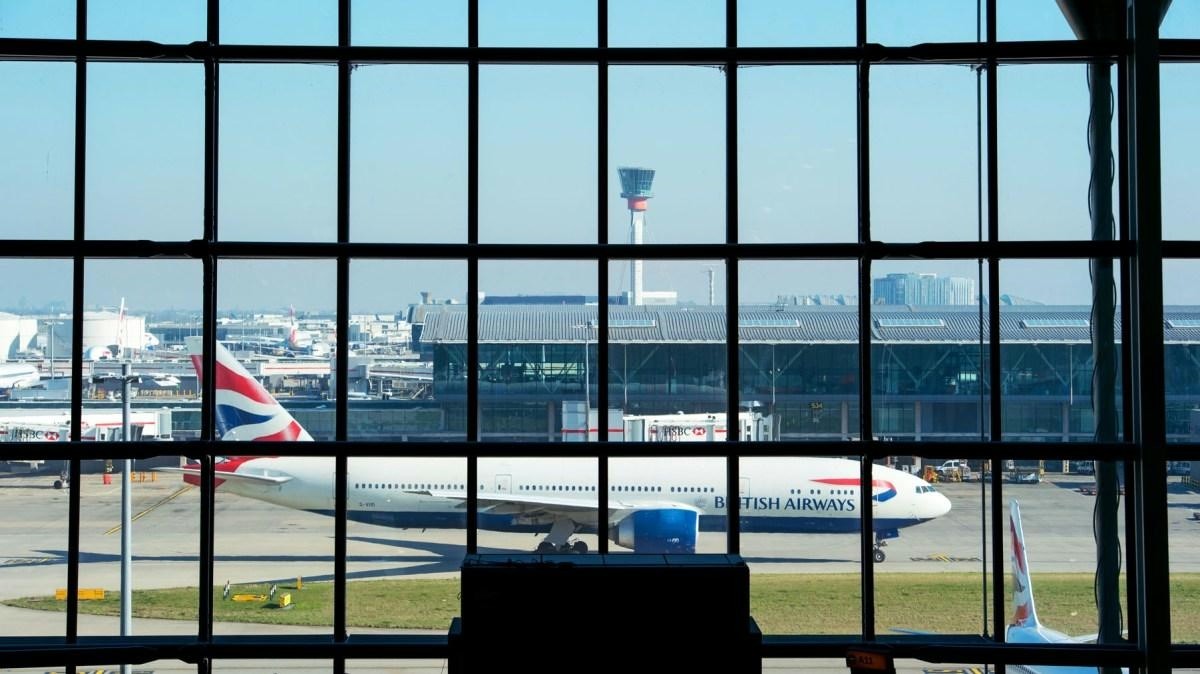
British Airways Employs AI to Reduce Delays and Cancellations
British Airways Employs AI to Reduce Delays and Cancellations
On a warm June afternoon at Heathrow Terminal 5’s remote stand 572, British Airways flight 343 from Nice experienced a delay, arriving nearly 40 minutes behind schedule after a routine go-around to avoid runway congestion. While such delays are common at Europe’s busiest airport, this particular turnaround marked a significant milestone: British Airways employed exclusively zero-emission ground equipment for the first time. The operation utilized buses powered by vegetable oil, lithium battery baggage tugs, and electric passenger steps, reflecting the airline’s commitment to sustainability alongside operational efficiency.
A Multibillion-Pound Transformation
This sustainable upgrade forms part of a broader, multibillion-pound transformation aimed at enhancing efficiency and reducing delays for passengers. British Airways is preparing for an anticipated surge in summer travel, with aviation data agency Cirium forecasting a record 52 million passengers between June and August, surpassing last year’s 51 million. The combination of rising passenger volumes and ongoing concerns about air traffic control disruptions—exacerbated by hot weather and potential strikes—has intensified pressure on airlines to optimize their operations.
In response, British Airways has invested £100 million in advanced artificial intelligence (AI) forecasting tools designed to improve ground operations at Heathrow. CEO Sean Doyle described this initiative as “devising a better way of working on the ground,” with the primary objective of minimizing delays and cancellations. Early indicators suggest the strategy is bearing fruit: in the first quarter of 2025, 86 percent of British Airways flights operated on time.
Challenges and Industry Implications
Despite promising results, integrating AI into airline operations presents significant challenges. Ensuring that AI systems are trained on data that accurately reflects both current realities and future conditions is essential to prevent flawed decision-making. The aviation sector’s inherent unpredictability—illustrated by the recent suspension of British Airways’ Tel Aviv service amid geopolitical tensions—demands that AI systems remain adaptable to rapidly evolving circumstances.
The airline’s competitors are closely monitoring these developments. Carriers that have yet to implement AI solutions may accelerate their adoption to maintain competitiveness in an increasingly technology-driven industry. Passenger reactions to AI integration are mixed; while many welcome the prospect of fewer delays and cancellations, some express concerns about potential biases embedded in AI decision-making processes.
Alongside AI and sustainability efforts, British Airways is also introducing new cabins on its latest aircraft, such as the A320neo, and has revamped its loyalty program, The Club. As the airline continues to navigate operational challenges and shifting passenger expectations, the effectiveness of its AI and environmental initiatives will be scrutinized not only by travelers but by the wider aviation industry.
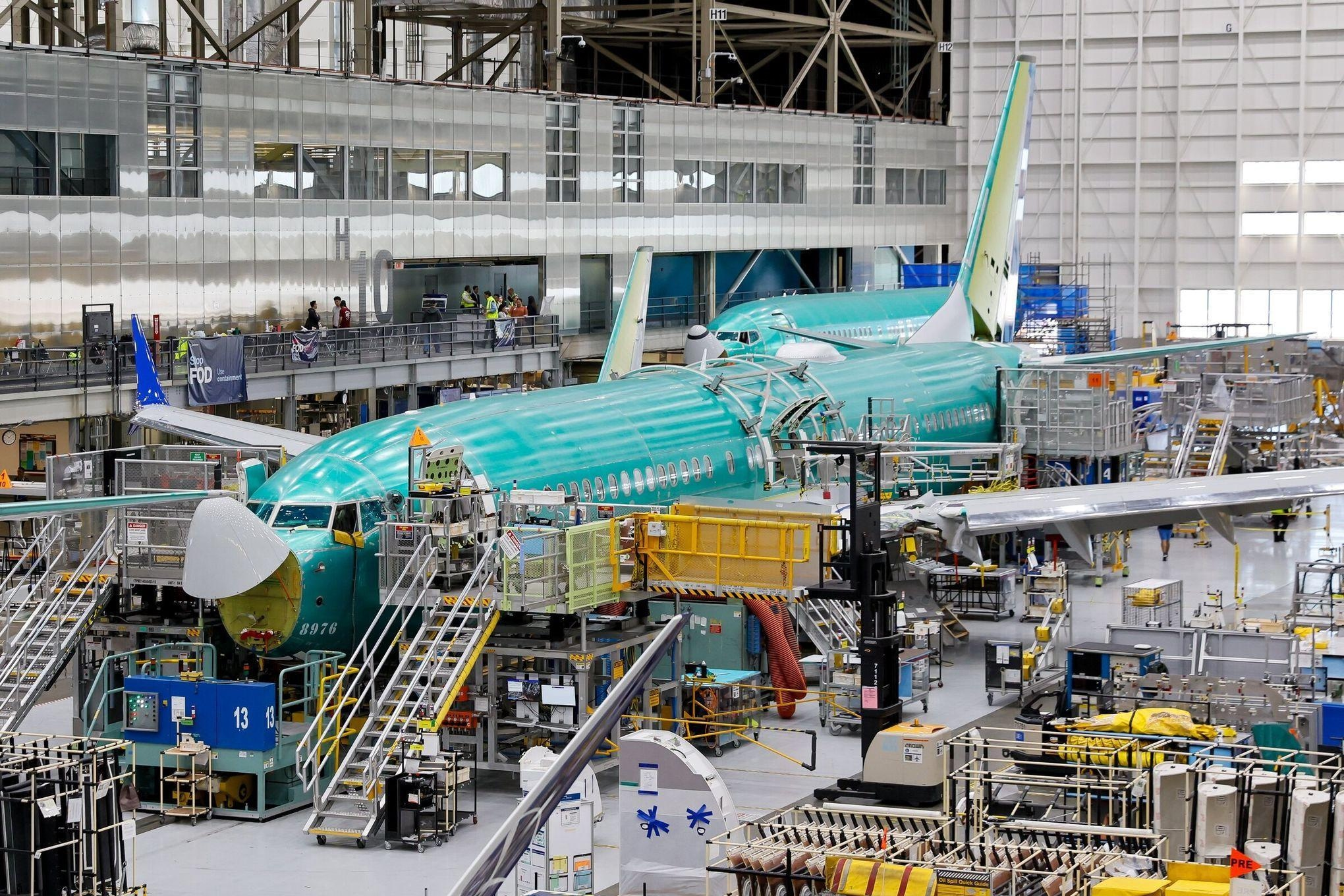
Boeing’s 2025 Deliveries Surpass Half of Last Year’s Total
Boeing’s 2025 Deliveries Surpass Half of Last Year’s Total Amid Industry Challenges
Boeing has reported a notable milestone in its 2025 aircraft deliveries, surpassing 50% of the total number delivered throughout 2024. As of May 13, the aerospace manufacturer confirmed that 45 customers received new aircraft in April, bringing the year-to-date delivery count to 175. This progress is significant given that Boeing delivered 348 aircraft in 2024, a year marked by considerable operational setbacks.
Setbacks and Recovery Efforts
The challenges Boeing faced in 2024 began early in the year with a high-profile safety incident involving an Alaska Airlines 737 MAX 9. Shortly after takeoff, a door plug detached from the aircraft, prompting widespread groundings and production restrictions that disrupted operations. Later in the year, a seven-week strike involving 33,000 workers further halted production, followed by a one-month pause to ensure a safe and orderly restart. These events collectively slowed Boeing’s output and complicated its recovery efforts.
Despite these obstacles, Boeing’s delivery pace in 2025 has shown signs of improvement. April deliveries increased modestly to 45 aircraft, up from 41 in March. The majority of these were 737 MAX jets, with 30 units delivered to customers including Air India, Ryanair, American Airlines, and Akasa Air. Additionally, April saw the delivery of a P-8 Poseidon maritime patrol aircraft to Germany and eight 787 Dreamliners, split evenly between American Airlines and Eva Air.
Market Dynamics and Outlook
While Boeing’s delivery figures reflect progress, the company continues to face intense competition from Airbus, which has expanded its lead in both orders and deliveries. Market responses to Boeing’s latest data have been mixed; some analysts express cautious optimism about the company’s resilience and gradual recovery, but persistent supply chain disruptions and production constraints remain significant challenges.
Boeing’s recent announcement of an order for eight 737 MAX jets from an undisclosed customer underscores ongoing demand for its narrowbody aircraft. However, sustaining and accelerating delivery rates will depend heavily on resolving supply chain issues and stabilizing production processes. As Boeing navigates a complex and competitive landscape, its performance in the coming months will be closely monitored by industry stakeholders and investors.
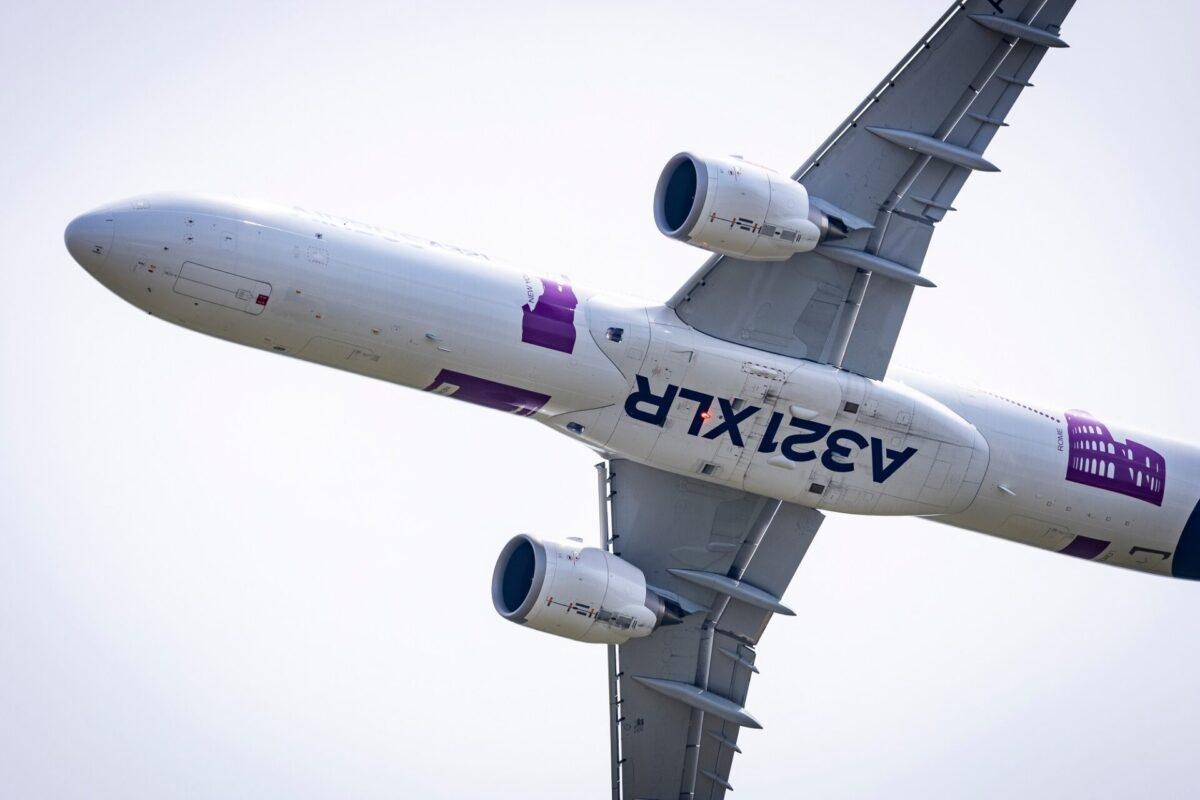
IndiGo A321XLR Delivery Timeline and Potential New Routes
IndiGo’s A321XLR Delivery Timeline and Expansion Strategy
India’s largest low-cost carrier, IndiGo Airlines, is preparing to receive its first Airbus A321XLR aircraft, now anticipated in December 2025. This new addition to the fleet is expected to significantly extend the airline’s international reach, enabling direct flights on longer routes that were previously inaccessible with its narrow-body aircraft. However, industry-wide production and supply chain disruptions pose risks to the delivery schedule, potentially affecting IndiGo’s ambitious global expansion plans.
The A321XLR, boasting a range of approximately 8,700 kilometers, will allow IndiGo to operate nonstop flights from major Indian hubs such as Delhi, Mumbai, and Hyderabad to destinations including Seoul, Athens, and Nairobi. These routes are central to the airline’s growth strategy through 2030, as it currently operates over 2,200 daily flights to more than 140 destinations across Asia, Europe, and Africa. IndiGo has placed an order for 69 A321XLRs, aiming to strengthen its presence in Europe, Northeast Asia, and East Africa.
CEO Pieter Elbers has described the A321XLR as a critical link between the airline’s existing A321neo fleet and its forthcoming long-haul Airbus A350 services, scheduled to commence in 2027. The extended range of the XLR model, which adds up to two hours of additional flying time, will open new markets such as Denpasar, Athens, and Nairobi, while reinforcing IndiGo’s foothold in established international sectors.
Challenges and Competitive Landscape
Despite these promising developments, IndiGo faces significant challenges. Delays in aircraft production and supply chains threaten to slow the introduction of the A321XLR, potentially postponing the launch of new long-haul routes and the planned rollout of business class services. These uncertainties have elicited mixed responses from investors, with some expressing concern over the impact on the airline’s expansion timeline, while others remain confident in IndiGo’s long-term growth prospects.
Competition is intensifying, notably from carriers such as Aegean Airlines, which is reportedly considering India for its initial A321LR routes. This emerging rivalry could affect key markets that IndiGo is targeting with its expanded fleet.
In response, IndiGo is advancing a multi-hub strategy designed to optimize fleet utilization and operational efficiency. Mumbai is positioned as the gateway to West Asia, Delhi will focus on Central Asia, and Hyderabad will support niche domestic and regional routes. This approach is intended to sustain and enhance the airline’s long-haul services.
To further strengthen its international network, IndiGo has established partnerships with major global airlines including Delta, Air France-KLM, Virgin Atlantic, and Japan Airlines. These alliances, facilitated through codeshare agreements, will extend IndiGo’s connectivity to over 30 cities across Europe and North America. Additionally, the airline has increased its order for wide-body Airbus A350s and plans to introduce Boeing 787 aircraft, diversifying its fleet and enabling direct service to high-demand long-haul destinations.
Leveraging India’s strategic geographic location—where 65% of the world’s population is within a five to six-hour flight—IndiGo aims to reduce dependence on foreign hubs and develop a self-reliant medium- and long-haul network. While supply chain delays present tangible obstacles, the airline remains focused on transforming its international connectivity and establishing itself as a globally competitive carrier.

Sanad, GE Aerospace, and Safran Expand CFM LEAP Engine Overhaul and Testing in Abu Dhabi
Sanad, GE Aerospace, and Safran Expand CFM LEAP Engine Overhaul and Testing in Abu Dhabi
Sanad, a global leader in aerospace engineering and leasing solutions owned by Abu Dhabi’s Mubadala Investment Company PJSC, has announced a major expansion of its maintenance, repair, and overhaul (MRO) capabilities for CFM International’s LEAP engines. In partnership with GE Aerospace and Safran Aircraft Engines, this initiative aims to support the growing international airline base operating the world’s most in-demand narrow-body engine family.
Expansion of Capabilities and Strategic Importance
The expansion involves significant enhancements to Sanad’s infrastructure and the creation of 140 new jobs, further establishing the UAE as a prominent global aerospace hub. Since 2023, Sanad has completed over 35 maintenance visits for LEAP-1A and LEAP-1B engines and is on track to achieve full in-house testing capabilities for both variants by the fourth quarter of 2025. This development will enable comprehensive overhauls, performance validation, and faster turnaround times, strengthening Sanad’s end-to-end MRO offering.
Under the new agreement, Sanad will extend its services to include full overhaul capabilities for both LEAP-1A and LEAP-1B engines. This expansion aligns with the rapid growth of the narrow-body aircraft segment, which is projected to constitute over 75% of the future global commercial fleet. The LEAP engine powers two of the most sought-after aircraft in this category: the Boeing 737 MAX and Airbus A320neo families. Sanad’s enhanced capabilities will provide comprehensive lifecycle support for the expanding LEAP engine fleet, delivering overhaul, repair, and testing services from its advanced Abu Dhabi facilities. This positions the company to meet evolving airline needs, optimize engine availability, and reinforce the UAE’s leadership in high-value aerospace services.
Industry Challenges and Global MRO Developments
The expansion occurs amid ongoing industry challenges related to engine durability. The LEAP engine has faced initial durability concerns, prompting CFM to develop a -1B fix and incorporate key learnings from these issues. GE Aerospace, co-owner of CFM, is intensifying its focus on durability through extensive testing, including dust-ingestion tests for the GE9X engine. These efforts reflect broader industry trends, as competitors such as Pratt & Whitney also address durability challenges, resulting in increased regulatory scrutiny and FAA inspections.
The global MRO ecosystem for LEAP engines is evolving rapidly. Turkish Technic is currently in discussions with CFM to establish a LEAP engine repair hub in Istanbul, while Hindustan Aeronautics Limited (HAL) has signed an agreement with Safran Aircraft Engines to produce LEAP engine parts in India. These developments underscore the industry’s commitment to enhancing engine reliability and supporting the growing demand for LEAP-powered aircraft.
Statements from Industry Leaders and Investment Plans
Mansoor Janahi, Managing Director and Group CEO of Sanad, emphasized that the expansion “reflects Sanad’s unwavering commitment to quality, innovation, technical expertise, and outstanding service excellence.” Alan Kelly, General Manager of CFM LEAP Engine Services at GE Aerospace, highlighted the benefits for regional carriers and the broader MRO ecosystem, noting that “Middle Eastern carriers will benefit from local capability, and the additional capacity will support the wider industry.” Nicolas Potier, Vice President of Support & Services for Safran Aircraft Engines, remarked that the collaboration demonstrates how the MRO ecosystem for LEAP engines “continues to grow and mature.”
To support this expansion, Sanad will invest in infrastructure, tooling, equipment, and operational capabilities within its existing MRO and test cell facilities in Abu Dhabi, reinforcing its role as a trusted partner in the global aerospace industry.

New Lightweight AI System Developed for Early Detection of Aviation Failures
New Lightweight AI System Developed for Early Detection of Aviation Failures
A team of researchers has introduced a new lightweight artificial intelligence (AI) system designed to identify early signs of aviation failures, with the goal of enhancing safety and reliability in air travel. Utilizing advanced machine learning algorithms, the system continuously monitors aircraft performance in real time, detecting anomalies that may signal potential malfunctions before they develop into critical problems.
Addressing Industry Challenges and Market Potential
The development of this AI system comes at a time when the aviation industry is under increasing pressure to elevate safety standards amid rising air traffic volumes and the growing complexity of aircraft systems. Airlines and regulatory authorities are expected to prioritize the integration of such technologies, as market analysts forecast a significant increase in investment in AI-driven safety solutions. Industry projections indicate that the market for Cabin Intelligence AI Systems will expand at a compound annual growth rate (CAGR) of 6.1% between 2025 and 2034, underscoring the strong demand for sophisticated AI applications in aviation.
Despite its promising capabilities, the system faces several hurdles before it can be widely adopted. Integrating the AI technology with existing aviation infrastructure will require extensive coordination among stakeholders. Moreover, developers must ensure that the system meets rigorous regulatory standards, as the accuracy and reliability of the AI are critical; false alarms or missed detections could have severe implications for flight safety.
Competitive Landscape and Future Implications
Industry experts anticipate that the introduction of this lightweight AI system will trigger rapid responses from competitors. Other technology providers are expected to accelerate the development of comparable AI solutions, forge partnerships with research institutions, and increase investments aimed at enhancing aviation safety technologies. This competitive environment is likely to stimulate further innovation, ultimately benefiting airlines, regulators, and passengers.
As the aviation sector continues its digital transformation, the deployment of advanced AI systems for early failure detection represents a significant advancement. By facilitating proactive maintenance and enabling quicker responses to emerging issues, these technologies have the potential to establish new standards for safety and operational efficiency in commercial aviation.
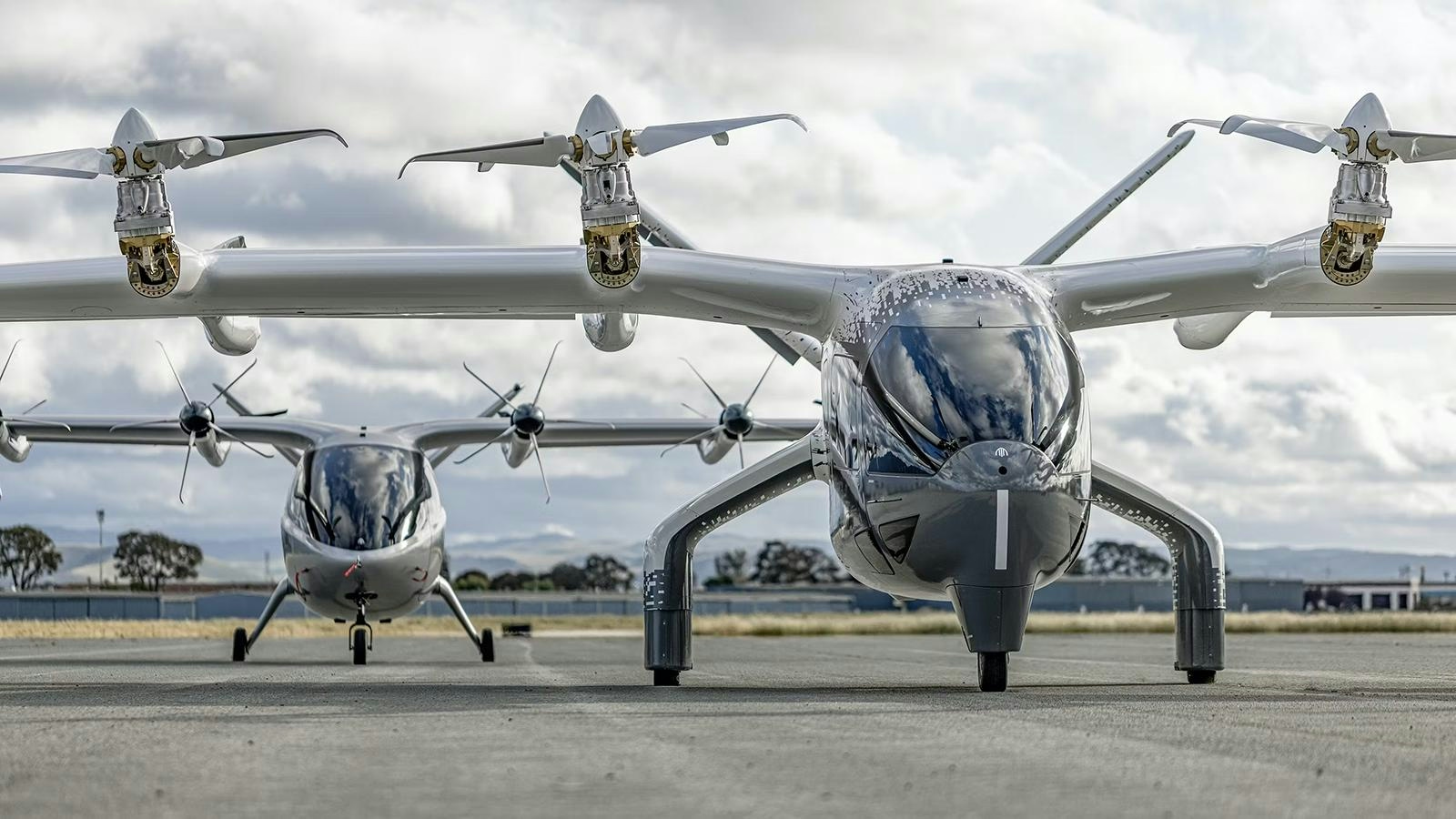
Archer’s Midnight Air Taxi Completes First Flight in UAE Desert
Archer’s Midnight Air Taxi Completes First Flight in UAE Desert
Archer Aviation’s Midnight electric vertical takeoff and landing (eVTOL) aircraft has successfully completed its inaugural flight at Al Bateen Executive Airport in Abu Dhabi. This milestone represents a crucial step in the company’s ambition to launch commercial air taxi services within the United Arab Emirates and to expand its footprint across the Middle East.
Testing in Challenging Conditions
The test flight was conducted with the support of the Smart and Autonomous Systems Council (SASC) and witnessed by senior officials from the UAE General Civil Aviation Authority (GCAA), the Abu Dhabi Investment Office (ADIO), the Integrated Transport Centre, Abu Dhabi Aviation, and Abu Dhabi Airports, alongside representatives from Archer’s regional partners. The operation focused on evaluating the Midnight aircraft’s vertical takeoff and landing capabilities under the demanding environmental conditions typical of the UAE, including high temperatures, humidity, and dust exposure. These factors are critical to ensuring the safety and reliability of urban air mobility solutions in the region.
H.E. Badr Al-Olama, Director General of ADIO, highlighted the significance of the flight, stating, “This flight marks a significant step towards realising Abu Dhabi’s ambition to lead the world in advanced urban air mobility.” He further noted that through the Smart and Autonomous Vehicles Industry (SAVI) Cluster, the UAE is fostering an environment that enables companies like Archer to test, certify, and scale next-generation air mobility technologies, reinforcing the country’s position as a global innovation hub.
Archer’s CEO and founder, Adam Goldstein, underscored the importance of conducting tests in real-world conditions, particularly during the summer months. He explained that such testing provides essential data to advance both commercial deployment and certification efforts in the UAE and the United States.
Commercialization and Market Challenges
The successful flight supports Archer’s Launch Edition commercialization program in partnership with Abu Dhabi Aviation, which aims to establish air taxi services within the emirate. The company plans to expand its flight-testing program in the region to collect additional data necessary for certification and commercialization in the UAE and other strategic markets.
Despite these advancements, Archer faces significant challenges on the path to commercial deployment. Navigating complex regulatory approval processes and meeting stringent safety certification requirements remain formidable obstacles. Additionally, the company contends with growing competition from other eVTOL developers such as Wisk and Otto, who may accelerate their own development timelines or seek strategic partnerships in response to Archer’s progress.
Investor interest has intensified following Archer’s recent achievements, fueling speculation about the commercial viability of air taxis. The company’s strategic expansion into markets including Indonesia and the UAE reflects a proactive approach to overcoming these challenges and positioning itself as a leader in the emerging urban air mobility sector.
Archer’s recent milestones, including securing regulatory design approval for the UAE’s first hybrid heliport at Abu Dhabi Cruise Terminal and establishing partnerships with prominent regional operators, further demonstrate its commitment to building a strong presence in early adopter markets. As competition in the eVTOL space intensifies, Archer’s progress in the UAE may serve as a catalyst for broader adoption of air taxi services worldwide.
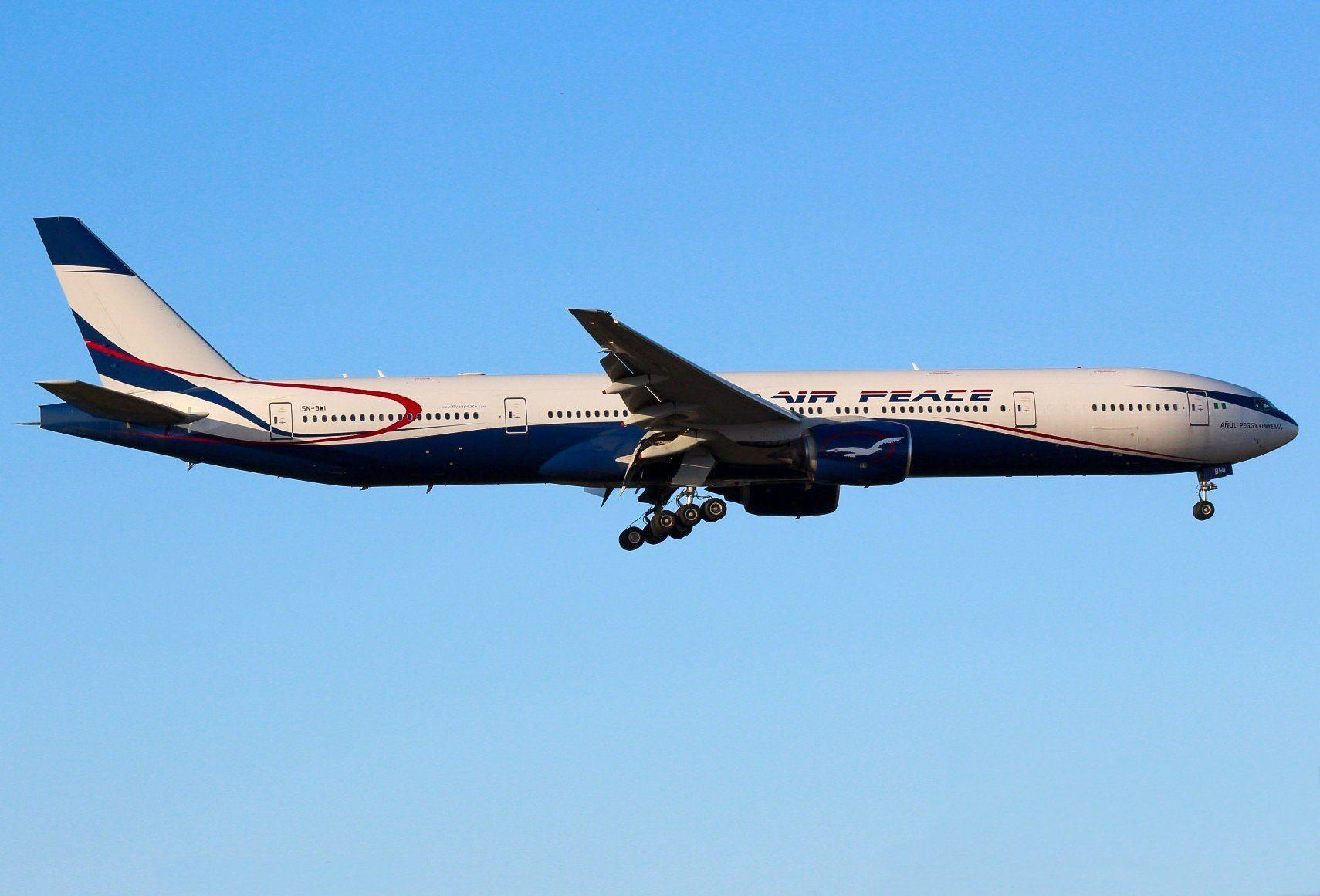
Nigeria’s Air Peace Plans Flights to Antigua and Barbuda by Late 2025
Nigeria’s Air Peace Plans Direct Flights to Antigua and Barbuda by Late 2025
Antigua and Barbuda is engaged in advanced negotiations with Nigeria’s Air Peace airline to establish scheduled flights between Lagos and the Caribbean nation by the fourth quarter of 2025, Prime Minister Gaston Browne has confirmed. Addressing parliament, Browne indicated that discussions remain ongoing and expressed optimism about the launch timeline. Efforts to obtain a comment from Air Peace have so far been unsuccessful.
This development forms part of Antigua and Barbuda’s broader strategy to enhance air connectivity with Africa. During the same parliamentary session, Browne highlighted the recent ratification of an air services agreement with Rwanda and noted that similar bilateral accords with Ghana and other West African countries are anticipated in the near future.
Implications for Regional Travel and Trade
The introduction of a direct Air Peace route between Lagos and Antigua and Barbuda has the potential to significantly alter regional travel patterns. It may prompt competing airlines to reconsider their service offerings in response to the new connection. More importantly, the route is expected to stimulate tourism and commercial exchanges between West Africa and the Caribbean, creating new economic opportunities for both regions.
Historical Context and Operational Challenges
Air Peace has previously operated two charter flights to Antigua and Barbuda, conducted in August and October 2023. These followed the short-lived operations of Antigua Airways, a public-private venture involving Nigerian and Antiguan partners, which provided charter services from West Africa in late 2022. Antigua Airways was suspended in January 2023 amid concerns related to passenger vetting and allegations of human trafficking. In response, the Antiguan government undertook a comprehensive review and implemented stricter passenger screening protocols.
Reflecting on these past difficulties, Prime Minister Browne acknowledged the lessons learned and emphasized the introduction of improved controls. He underscored that the renewed partnership with Air Peace aims to attract “genuine, wealthy tourists from Nigeria,” signaling a more targeted and secure approach to air travel between the two countries.
Expanding Influence in the Caribbean Aviation Sector
The planned Air Peace flights coincide with the airline’s expanding footprint in the Caribbean. Air Peace Caribbean recently acquired a 70% majority stake in LIAT 2020, the successor to the defunct regional carrier LIAT, with the Antiguan government retaining the remaining 30%. LIAT 2020 is tasked with restoring and enhancing inter-island air connectivity across the Caribbean.
Despite efforts by Air Peace Caribbean to distinguish itself from its Nigerian counterpart and its chairman, Allen Onyema—who is currently facing legal challenges in the United States—the two entities remain closely connected. Notably, Onyema is not directly involved in Air Peace Caribbean’s operations; however, its five private shareholders include his wife, Alice Onyema, who serves as vice-chairwoman of Air Peace Nigeria, along with their four children, all of whom hold directorships at Air Peace Nigeria.
As Antigua and Barbuda advances its plans to establish direct air links with Lagos, the government is positioning the country as a strategic gateway for increased tourism and trade with Africa. The progress and outcome of the ongoing negotiations with Air Peace will be closely monitored by industry observers and regional competitors alike.
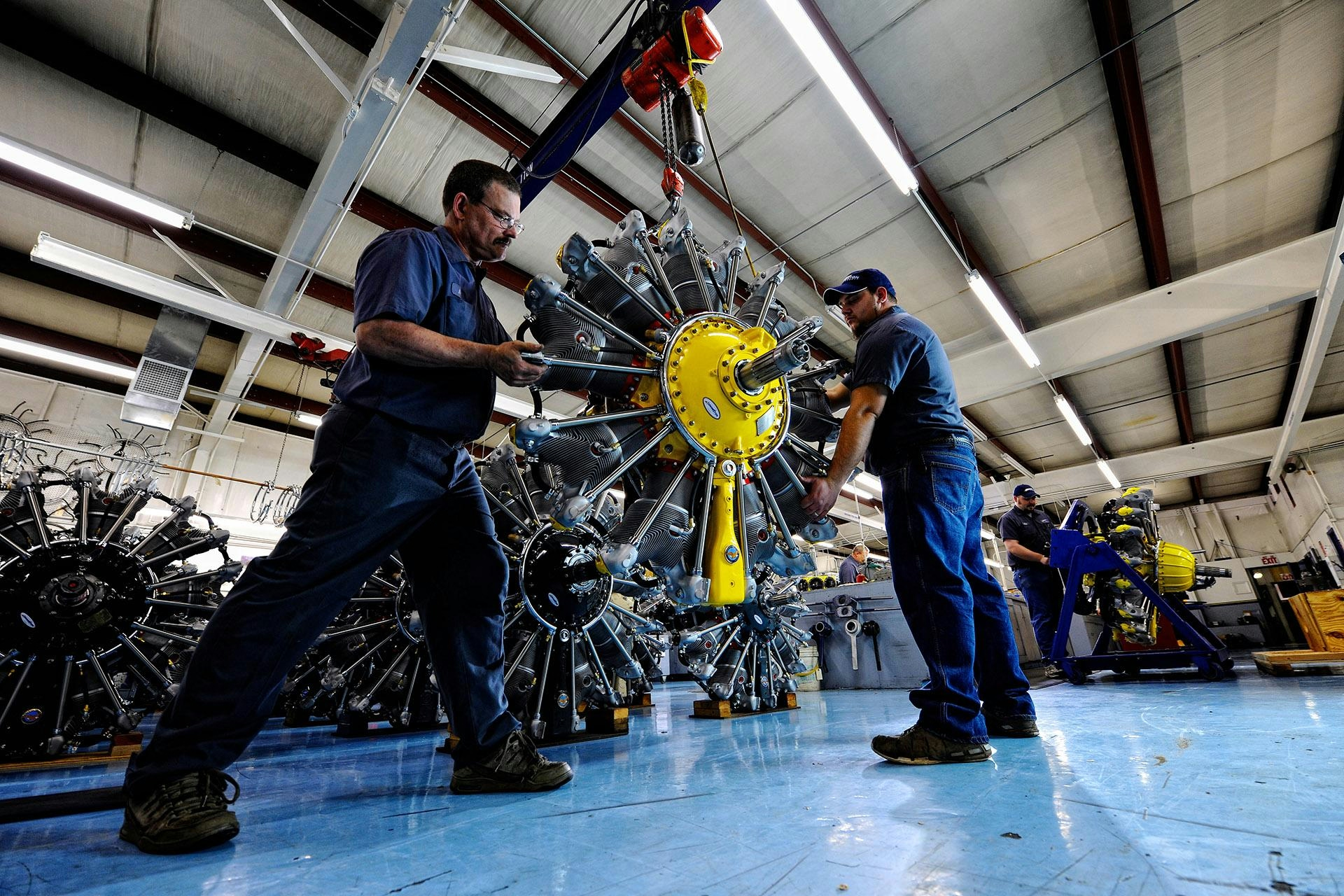
Covington Aircraft Engines to End Radial Engine Production in 2025
Covington Aircraft Engines to Cease Radial Engine Production in 2025
After more than fifty years of dedicated service to the aviation sector, Covington Aircraft Engines has announced it will close its esteemed radial engine facility by the end of 2025. Based in Oklahoma, the company has earned international acclaim for its expert overhauls of Pratt & Whitney Canada’s R-985 and R-1340 radial engines. Since its establishment in 1972, Covington has played a crucial role in maintaining and powering radial engine aircraft, becoming a cornerstone in the preservation of this classic technology.
A Legacy Rooted in Craftsmanship and Service
Founded by Bob Covington and Paul Abbott, the company initially concentrated on supporting radial engines for air cargo operators, particularly those involved in transporting automobile parts. Over the decades, Covington expanded its operations and cultivated a reputation for exceptional craftsmanship, integrity, and customer service. Its clientele grew to encompass not only commercial operators but also the warbird and agricultural aviation communities, solidifying Covington’s status as a trusted authority in radial engine maintenance.
In 2025, Covington is poised to reach a significant milestone by servicing its 10,000th Pratt & Whitney Canada radial engine, highlighting its position as one of the world’s most prolific providers of radial engine overhauls. Aaron Abbott, President of Covington Aircraft Engines, reflected on the decision to wind down operations, stating, “These engines are the very foundation of our business. They built our reputation and allowed us to grow into the company we are today. We are incredibly proud of the legacy we leave behind and honored to have been part of keeping these iconic engines flying for so many years.” The company has committed to continuing overhauls of the R-985 and R-1340 engines through the end of 2025 and will fully honor all existing warranty obligations.
Industry Transition and Future Challenges
Covington’s decision coincides with a period of profound technological transformation within the aviation industry. As the sector increasingly embraces advanced propulsion technologies—including hydrogen power initiatives and electric aircraft engines—the demand for traditional radial engines is diminishing. Collaborations such as those between GKN and ICEFlight, alongside innovations like Pratt & Whitney’s immersion cooling technology, are accelerating the adoption of next-generation propulsion systems. Meanwhile, major competitors including Safran Aircraft Engines and GE Aerospace are investing heavily in new engine leasing models and cutting-edge technologies such as the LEAP engines, diverting attention and resources from legacy engine platforms.
This shifting landscape presents significant challenges for Covington and similar enterprises, as the market grapples with concerns over the future availability and viability of traditional radial engines. Industry players are expected to intensify investments in electric and hydrogen-powered propulsion systems to remain competitive and capitalize on emerging opportunities.
As Covington Aircraft Engines prepares to conclude its radial engine operations, the company marks the end of a 53-year chapter defined by excellence, reliability, and a steadfast commitment to aviation heritage. The closure of its radial engine shop not only signifies the conclusion of an era for Covington but also reflects a broader industry transition toward the future of flight.
For further information, visit www.covingtonaircraft.com.
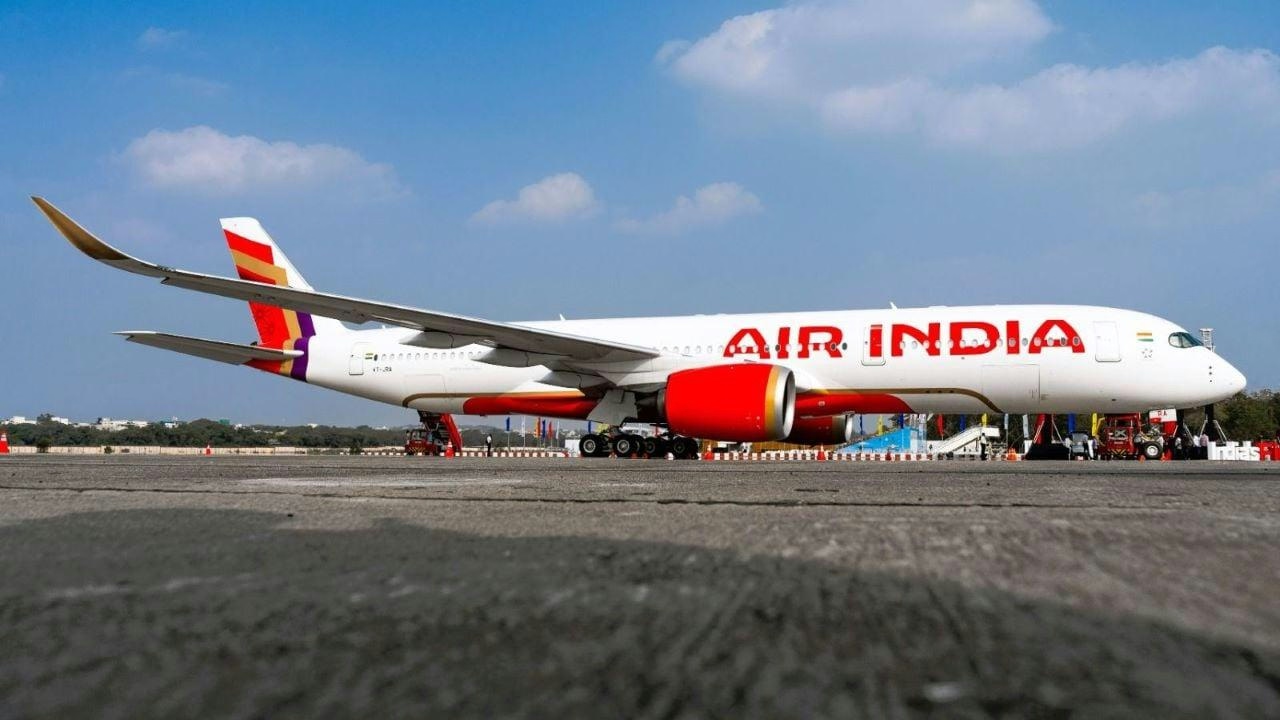
Air India Flight from Tokyo to Delhi Diverted to Kolkata Over Cabin Heat Problem
Air India Flight from Tokyo to Delhi Diverted to Kolkata Due to Cabin Heat Issue
Air India faced renewed operational challenges over the weekend when flight AI357, traveling from Tokyo’s Haneda Airport to Delhi, was diverted to Kolkata after the crew detected unusually high temperatures in the cabin. The incident, which occurred on June 29, has intensified concerns about the airline’s safety and reliability, especially in the aftermath of the deadly Ahmedabad crash earlier this month.
Details of the Diversion and Passenger Response
An Air India spokesperson confirmed that the diversion was a precautionary measure taken after persistent warmth was experienced inside the aircraft cabin. The flight landed safely in Kolkata, where the plane is currently undergoing thorough technical checks. Passengers were assisted by ground staff, provided with refreshments, and offered alternative arrangements to complete their journey to Delhi. The airline expressed regret for the inconvenience caused and assured that all necessary support was being extended to those affected.
Context of Recent Operational Setbacks
This incident follows a series of disruptions that have raised questions about Air India’s operational integrity. Just two days prior, flight AI639 from Mumbai to Chennai returned to Mumbai shortly after takeoff due to a burning smell detected in the cabin. Passengers were safely transferred to another aircraft. On the same day, a non-specific security alert on a separate Air India flight led to standard security procedures before the aircraft was cleared for departure. Additionally, an Air India Express flight from Delhi to Jammu was forced to turn back mid-flight because of a technical issue, with passengers subsequently accommodated on a different plane.
These repeated operational challenges come in the shadow of the June 12 crash of Flight AI-171 near Ahmedabad, which resulted in 260 fatalities. The tragedy has prompted intensified internal inspections and heightened regulatory scrutiny across India’s aviation sector.
Implications for Air India’s Future
The diversion of the Tokyo-Delhi flight also raises concerns about the progress of Air India’s Vihaan.AI transformation program, an ambitious initiative aimed at modernizing the airline and restoring its reputation. Industry analysts caution that ongoing operational issues could erode customer confidence and investor trust, potentially hindering the airline’s momentum at a critical time. Market observers have noted that persistent safety and reliability problems may create opportunities for competitors to capture market share if Air India does not address these challenges promptly.
As Air India seeks to reassure passengers and stakeholders, the airline faces increasing pressure to demonstrate concrete improvements in safety and operational reliability to safeguard its brand and maintain its position in a highly competitive aviation market.
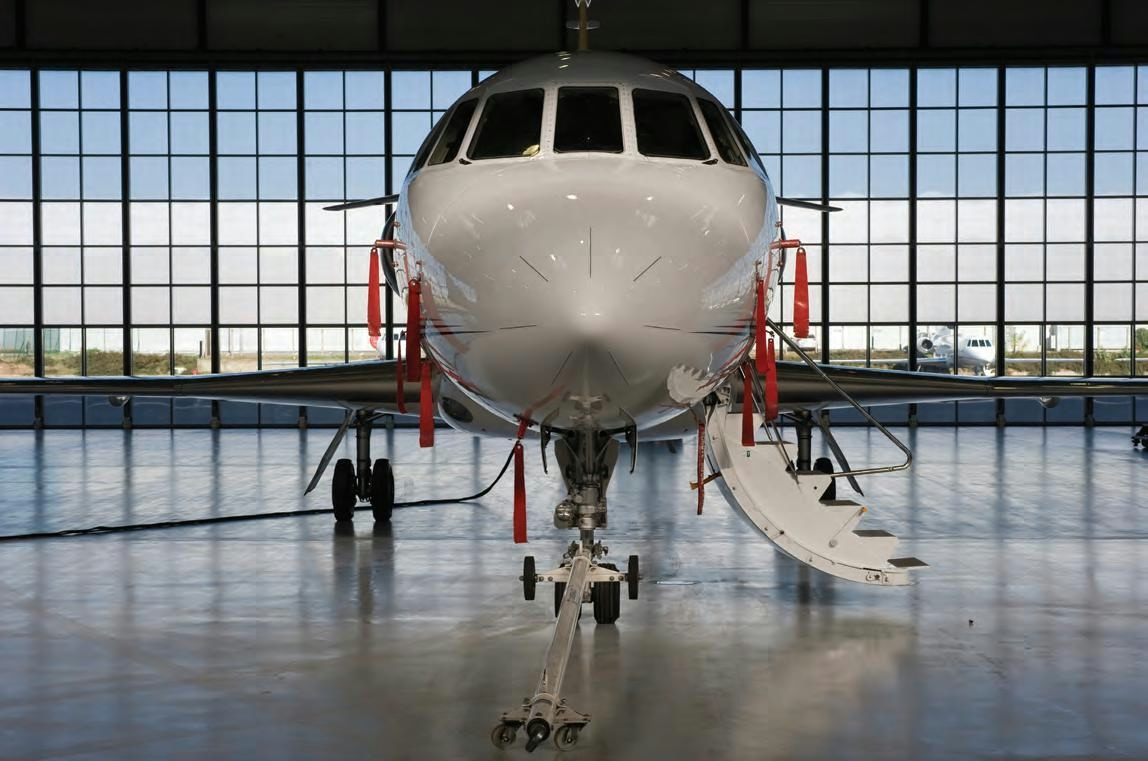
Volato Sells GC Aviation for $2 Million to Focus on Platform Growth
Volato Sells GC Aviation for $2 Million to Refocus on Platform Growth
ATLANTA, GA, June 30, 2025 — Volato Group, Inc. (NYSE American: SOAR), a technology-driven private aviation company, has completed the sale of its subsidiary GC Aviation, Inc. for $2 million in cash. The transaction, which includes the transfer of GC Aviation’s FAA Part 135 air carrier certificate, represents a strategic realignment as Volato intensifies its focus on scalable technology solutions and aircraft trading initiatives.
Strategic Shift Towards Technology and Trading
This divestiture forms part of Volato’s broader strategy to streamline operations and concentrate resources on high-growth areas. The company plans to channel the proceeds from the sale into its proprietary Mission Control software, the Vaunt experiential travel platform, and the expansion of its aircraft trading and leasing services. These core initiatives are viewed by Volato as offering the greatest potential for growth and enhanced returns.
Matt Liotta, Co-Founder and CEO of Volato, emphasized the rationale behind the move, stating, “Divesting GC Aviation was a deliberate move to concentrate on the areas of our business with the highest growth potential and strongest returns. It allows us to deploy capital more effectively, strengthen our balance sheet, and accelerate platform-driven opportunities that expand value for our customers and shareholders.”
Navigating a Competitive Business Aviation Market
Volato’s renewed focus emerges amid intensifying competition within the business aviation sector. The company faces significant challenges in maintaining its competitive edge, particularly as established rivals such as AirSprint dominate the Canadian market and NetJets maintain a stronghold in the United States. In response, Volato has pursued strategic partnerships, including the recent integration of Leviate Air Group’s aircraft into its platform, aiming to enhance its service offerings and broaden its market reach.
Market response to Volato’s strategic pivot has been largely positive. The company projects an 85% increase in second-quarter subscription sales for its Vaunt platform compared to the first quarter, indicating robust demand for its technology-driven solutions. Industry analysts anticipate that competitors may intensify marketing efforts and expand their fleets to defend their market positions.
Volato’s core businesses are designed to support a more capital-efficient operating model. The Mission Control software improves operational efficiency for fractional ownership and charter services, while the Vaunt platform connects travelers with available private flights, providing flexible on-demand travel options. These initiatives reflect Volato’s commitment to developing a next-generation aviation ecosystem centered on advanced technology and customer-focused solutions.
For further information, visit www.flyvolato.com.

Hanwha Aerospace signs $459 million contract for KF-21 jet engines
Hanwha Aerospace Secures $459 Million Contract for KF-21 Jet Engines
Hanwha Aerospace has finalized a follow-up contract worth 623.2 billion won ($459.3 million) with South Korea’s Defense Acquisition Program Administration (DAPA) to supply engines for the KF-21 supersonic fighter jets. This agreement, announced on Thursday, supplements a previous contract valued at 556.2 billion won signed earlier in 2023, bringing the total value of Hanwha’s KF-21 engine contracts to approximately 1.18 trillion won.
Contract Details and Production Plans
Under the terms of the new deal, Hanwha Aerospace is tasked with delivering 80 F414 engines for the initial mass production batch of KF-21 jets by December 2028. The contract also encompasses comprehensive logistics support, including maintenance parts, technical manuals, and on-site technical assistance to ensure operational readiness and sustainment.
Hanwha Aerospace has been a pivotal player in South Korea’s military aviation sector since 1979, having produced over 10,000 engines for aircraft such as the KF-5, KF-16, and F-15K. To enhance its manufacturing capabilities, the company has invested 40 billion won in establishing a smart factory dedicated to jet engine production. Hanwha emphasized its commitment to leveraging advanced aviation engine technology to guarantee timely delivery and to contribute to the development of next-generation propulsion systems for national defense.
Strategic Importance and Regional Implications
The KF-21 program, initiated in 2015, aims to replace South Korea’s aging fleet of F-4 and F-5 fighters and represents a critical component of the country’s air force modernization efforts. Deployment of the new aircraft is scheduled to commence by 2028. However, the program faces challenges related to the integration of advanced technologies, which could potentially cause production delays. The scale and complexity of the project require meticulous management to adhere to delivery timelines.
Despite these challenges, the KF-21 has attracted growing market interest as a cost-effective alternative to Western fighter jets. This has prompted intensified competition from foreign manufacturers seeking to enhance their own offerings in response to the KF-21’s emergence. Regionally, Indonesia has reaffirmed its commitment to the KF-21 program, even as it moderates expectations for its indigenous KAAN fighter project. This development suggests a shift in regional defense priorities, with countries increasingly viewing the KF-21 as a viable and strategic option.
As Hanwha Aerospace advances its role in the KF-21 initiative, the company’s continued investments and technological expertise are poised to play a significant role in shaping the future of South Korea’s defense industry and its standing in the global military aviation market.
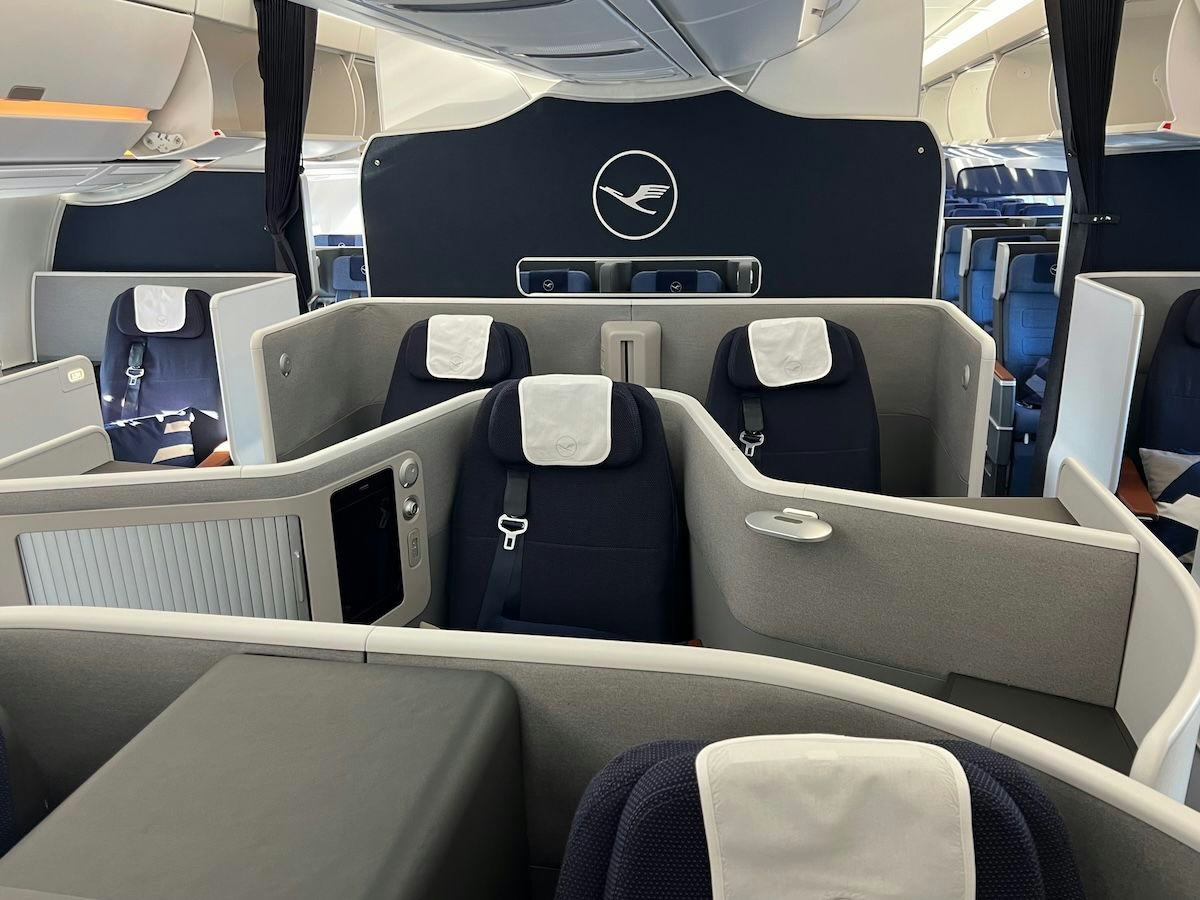
Airline Seat Shortages Delay Jet Deliveries
Airline Seat Shortages Delay Jet Deliveries
As global air travel recovers from the pandemic, the premium cabins of long-haul jets have become some of the most valuable spaces in the aviation industry. Airlines are investing heavily in these areas, with business-class seats commanding prices up to $100,000 and first-class suites reaching as high as $1 million, according to industry insiders. Lufthansa Group Chief Executive Carsten Spohr emphasized the importance of the onboard experience, noting that the crew, seating, and catering remain the few truly differentiating factors for airlines, rather than the aircraft themselves.
Supply Chain Crisis and Its Impact on Deliveries
Despite the growing demand for premium seating, a global shortage of aircraft seats has emerged as a critical bottleneck, contributing to widespread delays in jet deliveries and driving up airfares. A recent study by Tronos Aviation Consultancy and AeroDynamic Advisory projects that airlines will require more than 8 million new seats over the next decade. However, major manufacturers such as Boeing and Airbus have struggled to meet delivery targets amid persistent supply chain disruptions. In the first four months of this year, only 359 planes were delivered worldwide, a figure significantly below the forecasted 1,430.
Airbus has warned that these delays could continue for up to three more years, attributing much of the backlog to shortages of engines and, notably, aircraft seats. John Walton, founder of the specialist publication The Up Front, described the situation as a “perfect storm” of challenges that have stalled the industry. The seat manufacturing sector, characterized by fragmentation and slow recovery from the pandemic, faces additional hurdles including certification bottlenecks and rising demand for customized features. These factors hinder the ability to scale production efficiently.
The Complexity of Aircraft Seat Manufacturing
The intricacy of producing aircraft seats is often underestimated. Dafydd Davies, industrial vice president at Safran Seats GB, highlighted the complexity during a visit to the company’s factory in Cwmbran, South Wales. While the exterior of a seat may appear simple, the mechanical assembly beneath involves thousands of components. A single luxury seat can require up to 3,000 parts sourced from approximately 50 suppliers across 15 countries, illustrating the extensive and delicate nature of the supply chain.
This specialized segment of the aerospace industry has become central to resolving the delivery backlog that has cost Airbus and Boeing billions of dollars and contributed to rising ticket prices. In Canada, for instance, limited competition from discount airlines has exacerbated fare increases, prompting calls for greater foreign participation in the market.
Rising Demand and Industry Innovation
The business aviation sector is also experiencing robust growth, with aircraft deliveries expected to increase by 11% in 2025. This surge intensifies competition among seat manufacturers, who face mounting pressure to innovate and expand production capacity to satisfy both commercial and private aviation markets.
At the annual Aircraft Interiors exhibition in Hamburg, a highly exclusive event, manufacturers unveil advancements in smart seating technology, sustainable materials, and luxury amenities. Yet, despite these innovations, the fundamental challenge remains: delivering a premium passenger experience depends on the successful coordination of a complex global supply chain, meticulously assembling each seat—one component at a time.
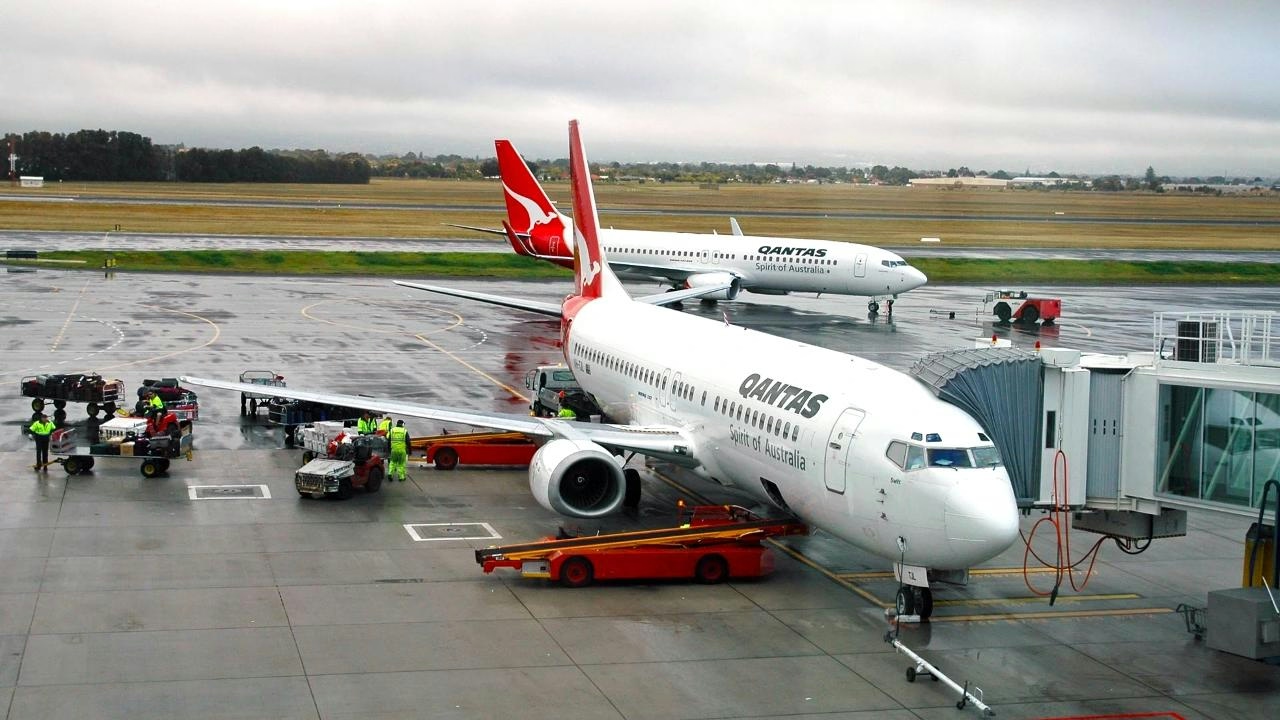
Qantas Leases Boeing 737s Amid Airbus A321XLR Delivery Delays
Qantas Leases Boeing 737s Amid Airbus A321XLR Delivery Delays
Addressing Capacity Challenges with Leased Aircraft
Qantas Airways has announced plans to lease four additional Boeing 737-800 aircraft to strengthen its domestic capacity in response to ongoing delays in the delivery of its new Airbus A321XLR jets. These leased 737s, described as “midlife” aircraft, are expected to enter service by the end of 2025, serving as a temporary solution to the shortfall caused by postponed Airbus deliveries.
The first Airbus A321XLR, initially scheduled for delivery earlier this year at Sydney Airport, is now expected to arrive next week, approximately three months behind the original timeline. This delay is part of a wider industry trend, with Airbus reporting a 4% decline in deliveries in May 2025 amid persistent production and supply chain difficulties. Such setbacks have led some airlines to contemplate legal action against manufacturers, while the market has expressed skepticism regarding interim fleet strategies, including Qantas’ decision to lease older aircraft models.
To maintain operational resilience, Qantas plans to partially upgrade the cabins of the leased Boeing 737-800s upon their entry into service. A comprehensive retrofit, designed to align the interiors with the airline’s next-generation cabin concept intended for the A321XLRs, will be implemented at a later stage.
Fleet Modernization and Cabin Refurbishment
The Airbus A321XLR represents a critical component of Qantas’ fleet modernization strategy, aimed at enhancing service across key hubs such as Melbourne and Brisbane, as well as improving both domestic and short-haul international operations. The delay in its arrival has temporarily disrupted the airline’s transition to a more modern and fuel-efficient fleet.
Concurrently, Qantas is undertaking an extensive cabin refurbishment program for its existing fleet of 42 Boeing 737s. This initiative forms part of a broader effort to elevate the passenger experience, featuring new seats, redesigned sidewalls, updated mood lighting, new carpets, and larger overhead bins capable of accommodating 50% more carry-on luggage. These upgrades are intended to closely mirror the interiors of the incoming Airbus A220 and A321XLR aircraft. The airline will continue to offer fast and free in-flight Wi-Fi on the retrofitted jets. The first fully refurbished 737 is scheduled to return to service in 2027.
The enhanced 737 fleet will continue to operate across Qantas’ domestic network and on short-haul international routes to destinations including Fiji, Vanuatu, and New Zealand. These improvements are designed to ensure service continuity and passenger comfort until the full transition to the new Airbus fleet is complete.
Qantas’ long-term fleet plan envisions replacing its Boeing 737s with Airbus A321XLRs and A220s. As of mid-2025, five Airbus A220s are already in active service, supporting the airline’s operational flexibility and sustainability objectives.
Industry-Wide Implications
The persistent delays in aircraft deliveries reflect broader challenges confronting the aviation industry. Qantas’ approach exemplifies how airlines are adapting to these disruptions by seeking alternative solutions to maintain capacity and service standards. As uncertainty around production timelines continues, other carriers may also explore similar strategies to manage their fleet requirements amid an evolving and complex market environment.
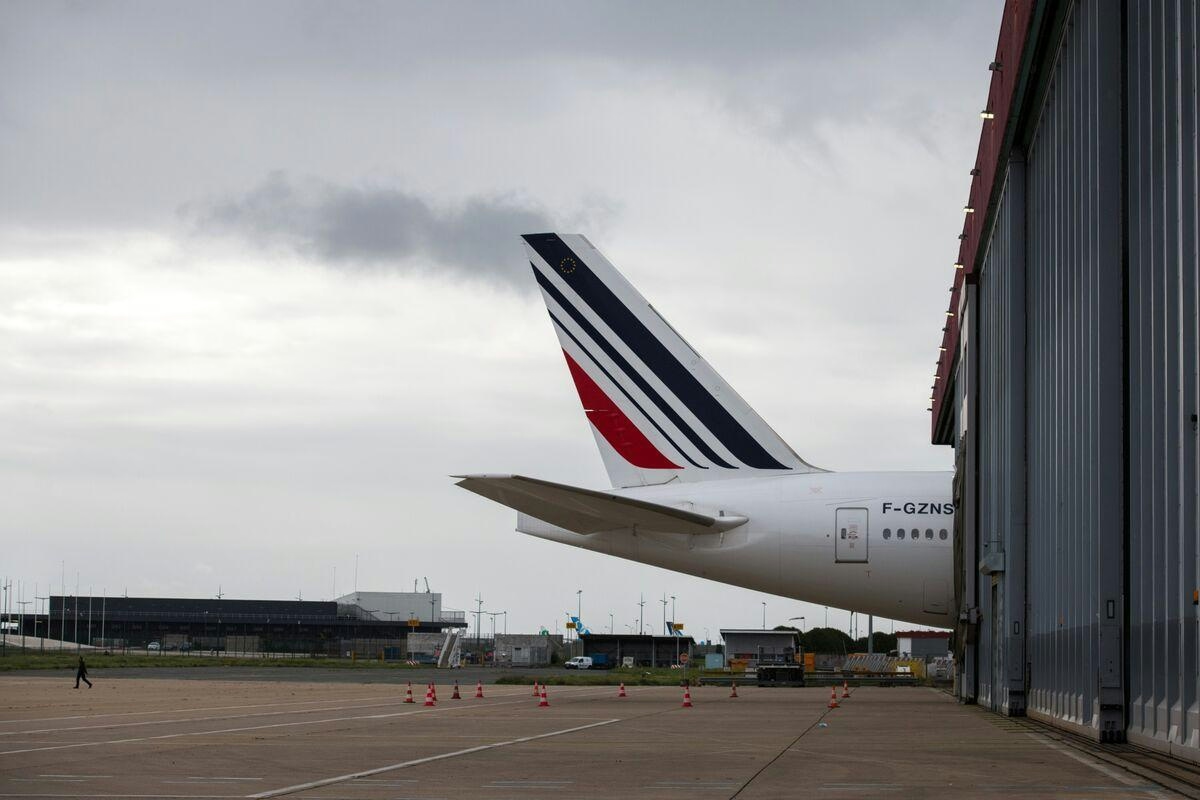
Air France Plans to Hire Over 2,000 Staff in Aviation and Sustainability at Paris Air Show 2025
Air France to Recruit Over 2,000 Employees in Aviation and Sustainability at Paris Air Show 2025
Air France has announced an ambitious plan to hire more than 2,000 new employees across aviation and sustainability sectors, unveiling this major recruitment drive at the 2025 Paris Air Show. This initiative addresses a critical workforce shortage confronting the global aviation industry, as highlighted by analysts from the Aerospace Industries Association and McKinsey, who warn of persistent talent gaps amid rapid sector growth and elevated attrition rates.
At the Paris Air Show, Air France attracted over 5,000 visitors to its booth, providing an immersive experience into the diverse career opportunities within the airline. More than 120 employees from the Air France-KLM Group—including pilots, engineers, and IT specialists—engaged with attendees to discuss career prospects and demonstrate the airline’s latest advancements in digital systems and aircraft maintenance. The company underscored its dedication to cultivating future talent by offering a platform for students, graduates, and seasoned professionals to explore potential career paths.
Strategic Recruitment Amid Industry Challenges
The 2025 recruitment campaign represents one of Air France’s most significant hiring efforts in recent years, reflecting both the airline’s expansion goals and the broader industry’s pressing demand for skilled personnel. The initiative encompasses permanent roles, apprenticeships, and positions across critical areas such as aircraft maintenance, digital technologies and IT systems, flight operations, commercial and customer service, as well as support and administrative functions.
Air France is placing particular emphasis on diversity and gender equality, actively seeking candidates from varied backgrounds. This inclusive approach aims to meet the evolving requirements of an aviation sector undergoing profound digital transformation while facing intensified competition for talent.
Industry-Wide Implications and Competitive Pressures
Air France’s recruitment plans arrive at a pivotal juncture for the aviation industry. Boeing’s latest 20-year Commercial Market Outlook projects a global demand for approximately 43,600 new airliners, underscoring the scale of workforce expansion required. As airlines worldwide accelerate hiring to satisfy this demand, competition for qualified workers is expected to intensify, potentially driving upward pressure on salaries and benefits.
Rivals such as Airbus and Embraer are anticipated to adopt comparable recruitment strategies, further intensifying the competition for skilled professionals. This evolving dynamic is reshaping the labor market, making talent acquisition and retention critical priorities for airlines striving to maintain operational excellence and foster ongoing innovation.
Partnerships to Shape the Future Workforce
In addition to its recruitment efforts, Air France is investing in the future of aviation through strategic partnerships with leading educational institutions. These collaborations focus on developing specialized training programs designed to cultivate the next generation of aviation professionals, ensuring a sustainable talent pipeline equipped to address the industry’s changing demands.
As the aviation sector recovers from the pandemic and embraces emerging technologies, Air France’s comprehensive recruitment and workforce development initiatives position the airline at the forefront of industry transformation, highlighting both the opportunities and challenges that lie ahead.

Denise Mangan-Fahy appointed CEO of Shannon Engine Support
Denise Mangan-Fahy Appointed CEO of Shannon Engine Support
Denise Mangan-Fahy has been appointed Chief Executive Officer of Shannon Engine Support (SES), a leading global provider of spare engine leasing solutions jointly owned by AerCap and Safran Aircraft Engines. She will assume the role in September, succeeding Julie Dickerson, who is retiring after more than ten years at the company’s helm.
Extensive Industry Experience
Mangan-Fahy brings 35 years of aerospace industry experience to her new position. She began her career with Shannon Aerospace before joining GE Capital Aviation Services (GECAS) in 1998 as Vice President of Engine Management. Over the years, she advanced to Senior Vice President of Portfolio and Rental Operations in 2018. Following AerCap’s acquisition of GECAS from General Electric in 2021, she was appointed Head of Portfolio & Rental Operations for AerCap Engines. Her deep expertise in engine management and portfolio operations is expected to be instrumental as SES pursues its strategic goals.
Strategic Outlook for SES
SES has established itself as a prominent player in the engine leasing market, supplying CFM engines—including the widely used CFM56 and the newer LEAP models—to airlines around the world. The company aims to manage a fleet of 700 engines by the end of 2025, with ambitions to expand this to 900 engines by 2028. Mangan-Fahy’s leadership arrives at a critical juncture as SES seeks to consolidate its market position amid intensifying competition.
Industry analysts suggest that her appointment aligns well with SES’s growth trajectory, though it may also invite scrutiny regarding how her previous leadership roles will influence the company’s evolving objectives. Competitors are expected to closely observe SES’s strategic moves under her guidance, potentially responding by enhancing their own leadership structures or expanding their market share to maintain competitive parity.
Julie Dickerson’s tenure was marked by steady growth and strong industry leadership, and Mangan-Fahy’s succession signals a new phase for SES as it aims to build on this foundation and accelerate its expansion in the global engine leasing sector.
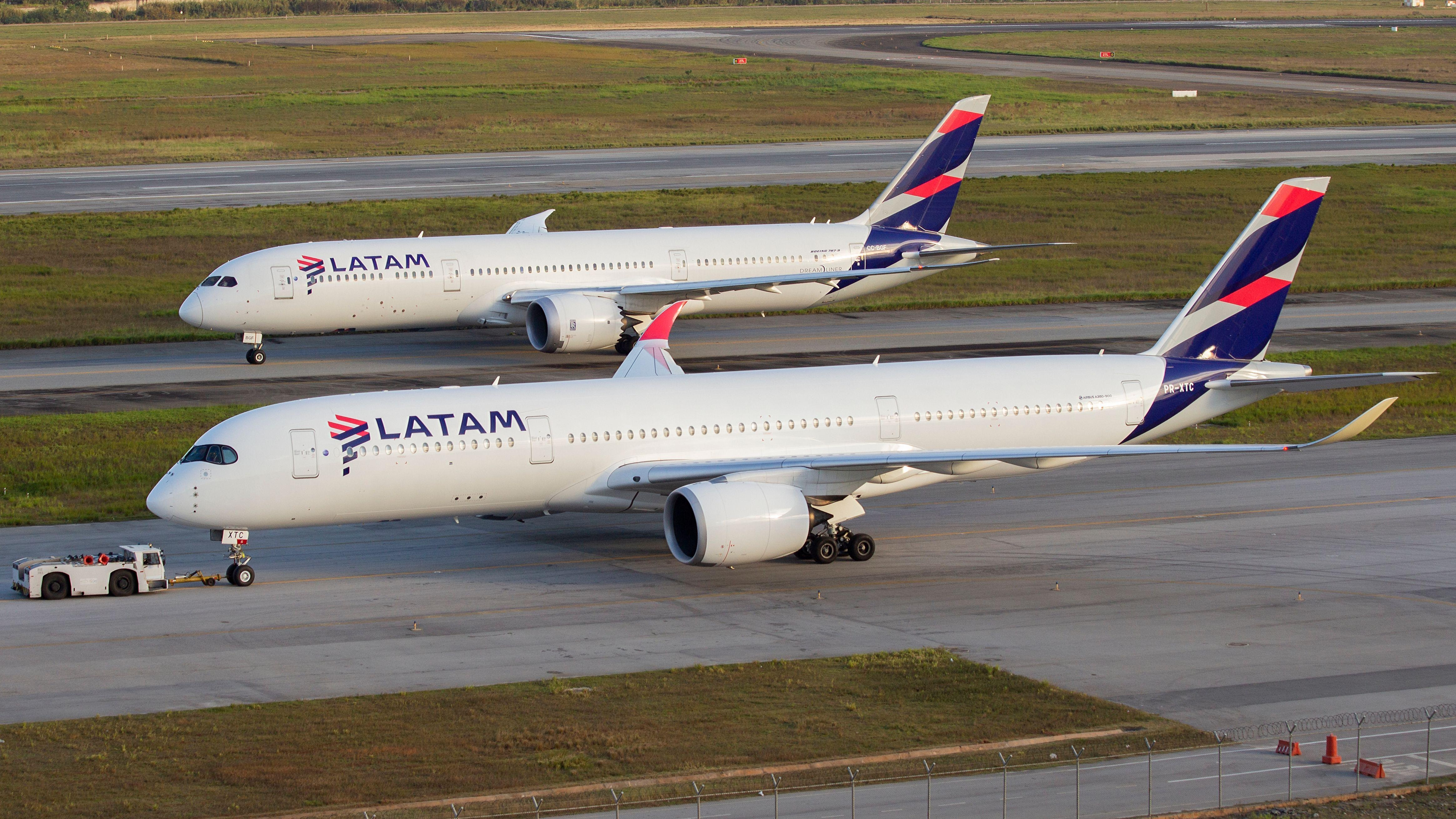
Comparing Costs of the Boeing 787 and Airbus A350
Comparing Costs of the Boeing 787 and Airbus A350
The Airbus A350 and Boeing 787 Dreamliner stand as two of the most advanced widebody aircraft in commercial aviation today. Representing the latest generation of long-haul airliners, these twin-aisle jets offer significant operational improvements over older models. With the Boeing 777X yet to enter service, the A350 and 787 have become the primary options for airlines seeking modern, efficient aircraft for extended routes. Both families have attracted substantial interest, with the 787 securing nearly 2,000 orders and the A350 surpassing 1,000. The 787 entered service first in 2011 with All Nippon Airways (ANA), while the A350 followed in 2015 with Qatar Airways. Consequently, the 787 has nearly double the number of deliveries compared to the A350 as of early 2025.
Although these aircraft share many technological advancements, they are not direct equivalents. The A350 is generally larger and offers greater range, reflecting Airbus’s strategy to position it as a competitor not only to the 787 but also to the larger Boeing 777 family. In typical two-class configurations, the 787 seats between 248 and 336 passengers depending on the variant. The A350-900 accommodates 300 to 350 passengers, while the larger A350-1000 seats between 350 and 410 across three classes. Airlines often consider both models when updating their long-haul fleets, weighing factors such as capacity, range, and cost.
Pricing and Operational Considerations
Boeing 787 Dreamliner Pricing
The Boeing 787 Dreamliner is offered in three variants: the 787-8, 787-9, and 787-10. The 787-8 measures 186 feet in length, seats 248 passengers in a two-class layout, and has a range of 7,305 nautical miles. The 787-9 extends to 206 feet, accommodates 296 passengers, and offers a range of 7,565 nautical miles. The largest variant, the 787-10, is 224 feet long, seats 336 passengers, but has a shorter range of 6,330 nautical miles.
According to the latest valuations from the International Bureau of Aviation (IBA), Boeing’s list prices stand at $248.3 million for the 787-8, $292.5 million for the 787-9, and $338.4 million for the 787-10. These figures serve as starting points for negotiations, with airlines typically securing substantial discounts—sometimes exceeding 50 percent—particularly for large orders. The final price depends on various factors including order size, customization, after-sales support, and financing arrangements.
Airbus A350 Pricing and Market Position
Airbus employs a similar pricing approach for the A350, with list prices serving as a baseline for negotiations. The A350’s sticker price is generally higher than that of the 787, reflecting its larger size and extended range capabilities, especially in the A350-1000 variant. However, actual transaction prices are often significantly lower after discounts and incentives are applied.
The higher upfront cost of the A350 corresponds to its appeal for airlines operating premium, ultra-long-haul routes where efficiency and passenger comfort are paramount. Market trends indicate that airlines frequently favor the A350 for these demanding routes despite its higher acquisition cost, valuing its superior range and capacity.
Operational and Cost Considerations
While the Boeing 787 typically commands a lower upfront cost compared to the Airbus A350, both aircraft families offer comparable operational costs in terms of fuel efficiency and maintenance. The A350’s advantage lies in its greater range and seating capacity, making it the preferred choice for airlines targeting long-haul, high-yield markets.
In essence, the Boeing 787 is generally less expensive to acquire, but the Airbus A350’s enhanced capabilities and market appeal—particularly for premium, long-range operations—often justify its higher price for many carriers. The ultimate decision between the two models depends on an airline’s specific route network, capacity requirements, and long-term strategic objectives.

Rising Global Air Traffic Fuels Growth in Commercial Aviation Crew Management Software
Rising Global Air Traffic Fuels Growth in Commercial Aviation Crew Management Software
The global commercial aviation crew management software market is witnessing significant expansion, driven by a resurgence in air traffic and the growing complexity of airline operations. A recent report by DataM Intelligence indicates that the market was valued at US$0.9 billion in 2022 and is expected to reach US$3.4 billion by 2030, reflecting a compound annual growth rate (CAGR) of 8.6% between 2024 and 2031.
As airlines recover from the pandemic and broaden their route networks, the demand for efficient crew management solutions has intensified. These digital platforms play a crucial role in streamlining crew scheduling, ensuring regulatory compliance, managing training programs, and optimizing logistical operations. Such capabilities have become increasingly vital amid heightened regulatory scrutiny and a global shortage of skilled aviation professionals.
Industry Trends and Market Drivers
The commercial aviation sector is confronting unprecedented challenges as global air traffic rebounds. The necessity for advanced crew management software is underscored by several critical factors. Regulatory compliance remains a primary driver, with airlines adopting sophisticated software solutions to meet increasingly stringent safety standards and complex regulatory requirements. Additionally, the industry faces a looming workforce shortage, with projections estimating a need for nearly 1.5 million new pilots, maintenance technicians, cabin crew, and air traffic controllers by 2034 to accommodate growing demand and replace retiring personnel.
Safety management also plays a pivotal role in market growth. The aviation safety management systems market is anticipated to expand from USD 3.5 billion in 2024 to USD 5.8 billion by 2034, at a CAGR of 5.2%. Meanwhile, the aviation safety compliance market is forecasted to reach USD 13 billion by 2034. In response to these trends, leading software providers are incorporating advanced technologies such as artificial intelligence for crew forecasting, real-time disruption management, and predictive fatigue monitoring. For instance, Jeppesen, a Boeing company, recently introduced a cloud-native crew management suite featuring biometric logins and enhanced safety tools.
Key Market Players and Regional Insights
Prominent companies driving innovation in the commercial aviation crew management software market include Prolog Development Centre A/S, Fujitsu, Hitit Computer Services, IBS Software Services, Lufthansa Systems, AIMS Corporation, Hexaware, Optima, Sheorey Digital Systems Pvt Ltd, and Advanced Optimization Systems.
The market is segmented by type—encompassing software, hardware, services, and others—and by application areas such as crew manifest and manning, vacation and absence management, and training. Regionally, North America, Europe, Asia-Pacific, South America, and the Middle East & Africa are all experiencing increased adoption of these solutions. Asia-Pacific and North America lead this growth, driven by rapid airline expansion and evolving regulatory frameworks.
Research Methodology and Outlook
The DataM Intelligence report utilizes a dual-source research methodology, integrating primary and secondary data to analyze industry trends, regulatory impacts, technological advancements, and competitive dynamics comprehensively.
With global air travel on an upward trajectory, the commercial aviation crew management software market is poised for sustained growth. Airlines are progressively investing in digital solutions to meet regulatory requirements, address workforce shortages, and enhance safety measures, thereby ensuring efficient, compliant, and secure operations within an increasingly complex industry environment.

Ahmedabad Crash: Right Engine Recovered from Under Concrete Water Tank; Both Engines Removed
Ahmedabad Crash: Both Engines Recovered from Under Concrete Water Tank as Investigation Advances
Days after the Air India aircraft crashed into the B J Medical College hostel mess on June 12, authorities have successfully recovered the right engine, which had been buried beneath a concrete water tank. Over the weekend, special heavy-duty cranes with a lifting capacity of 300 tonnes were deployed to remove the reinforced concrete tank, which had been displaced by more than 20 feet during the crash. This operation allowed investigators to extract the right engine trapped underneath. The left engine, which was found lying on the ground nearby, was also removed and transported on the same day.
A senior government official confirmed that both engines were taken to the GUJSAIL (Gujarat State Aviation Infrastructure Company Limited) hangar located within the airport premises. The rear section of the aircraft, which had been lodged in the hostel mess building, had already been carefully extracted and moved to the same secure location.
Progress in Investigation and Debris Removal
The recovery of the engines represents a significant milestone in the ongoing investigation led by the Aircraft Accident Investigation Bureau (AAIB). The bureau has been working in close coordination with the Ahmedabad Municipal Corporation and City Police to transfer debris to a secure site at the airport. With the engines—among the largest remaining components—now relocated, officials anticipate that the removal of the remaining wreckage will be completed within the next two days.
The investigation has also been aided by the recovery of the aircraft’s black box, which includes both the flight data recorder and cockpit voice recorder. These devices are providing critical data to reconstruct the sequence of events leading up to the crash, which tragically claimed the lives of 241 passengers and crew, as well as several individuals on the ground. Experts will conduct detailed analyses of the recovered engines to evaluate their condition and performance at the time of the accident.
Technical Examination and Industry Response
The right engine’s extraction was particularly challenging due to its position beneath the massive water tank, which contained approximately 5,000 litres of reinforced cement concrete (RCC) and weighed around five tonnes. The operation, carried out on Saturday, took nearly a full day to complete. Officials awaited clearance from GE Aerospace, which is conducting a thorough examination of both engines.
Air India CEO Campbell Wilson stated last week that the aircraft had been well-maintained, with its last major inspection conducted in June 2023 and the next scheduled for December 2025. The right engine had undergone an overhaul in March 2025, while the left engine was inspected in April 2025, with no reported issues prior to the ill-fated flight.
The crash has elicited significant reactions across the aviation sector, with airlines and regulatory authorities closely monitoring the investigation’s progress. Industry competitors are expected to review and strengthen safety protocols and operational procedures in response, aiming to prevent similar tragedies. The AAIB’s ongoing analysis of the black box data and the recovered engines is anticipated to play a crucial role in informing these enhanced safety measures.
Ask AeroGenie